EXPLORING A SENSE OF PLACE – FROM HARTLAND POINT TO HIDCOTE
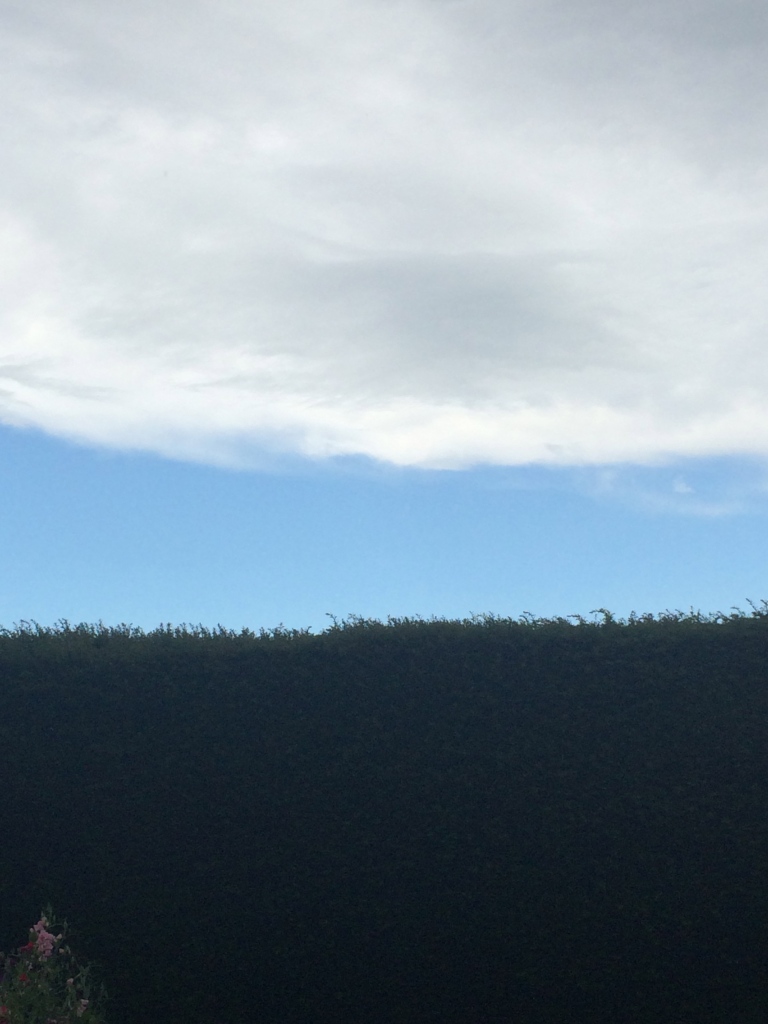 Brooding cloud, blue sky and yew hedge, Devon
Brooding cloud, blue sky and yew hedge, Devon
It has been a happy itinerant summer. We have been lurching around the countryside with kind invitations to stay with friends and family at home and an escape to the sun on the island of Zakynthos in Greece. As I look back at photographs taken over the last few weeks I feel dazed by the strength of atmosphere offered by each new and contrasting place. This is an album of the way I have been looking at plants and gardens this summer.
Our arrival at Hartland Point in North Devon, late on a Saturday afternoon at the beginning of July, feels like the true beginning of summer. After a steamy last week of term, 35°C and rising for every concert and prize giving event, it is an intense pleasure to step quietly out of the car and feel the fresh cardigan-cool of this lush coastal spot.
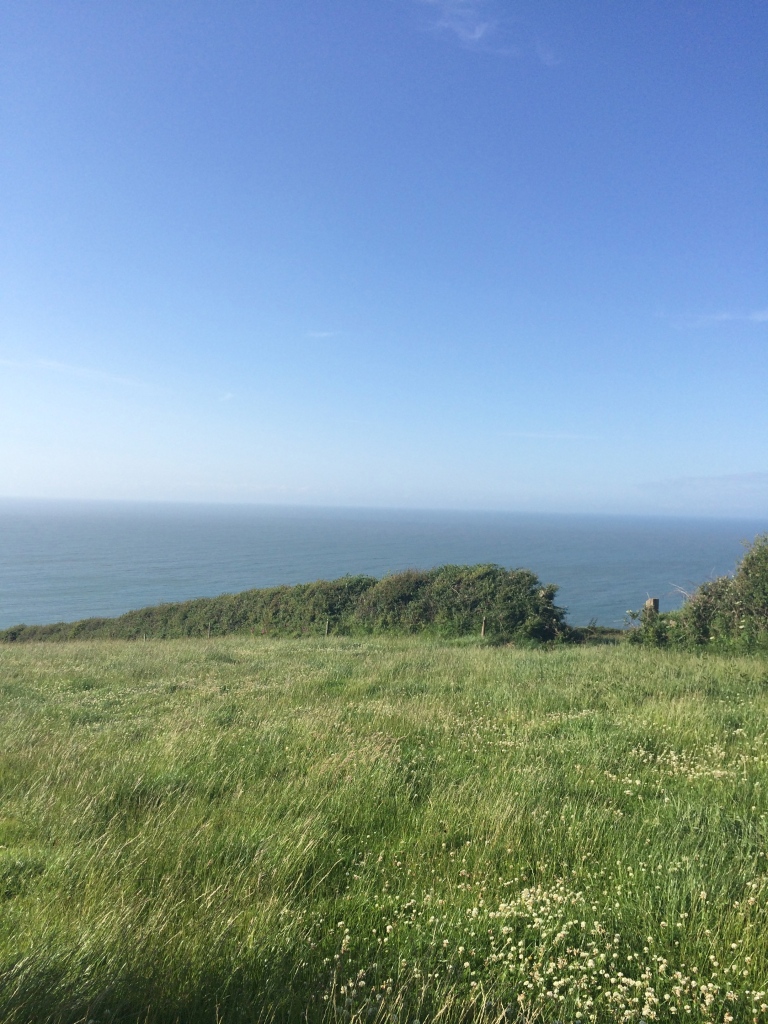 View to the sea, Hartland Point
View to the sea, Hartland Point
A high-hedged path, made narrow by skyrockets of pink foxgloves and sprawling drapes of dog rose, draws us towards the sea:

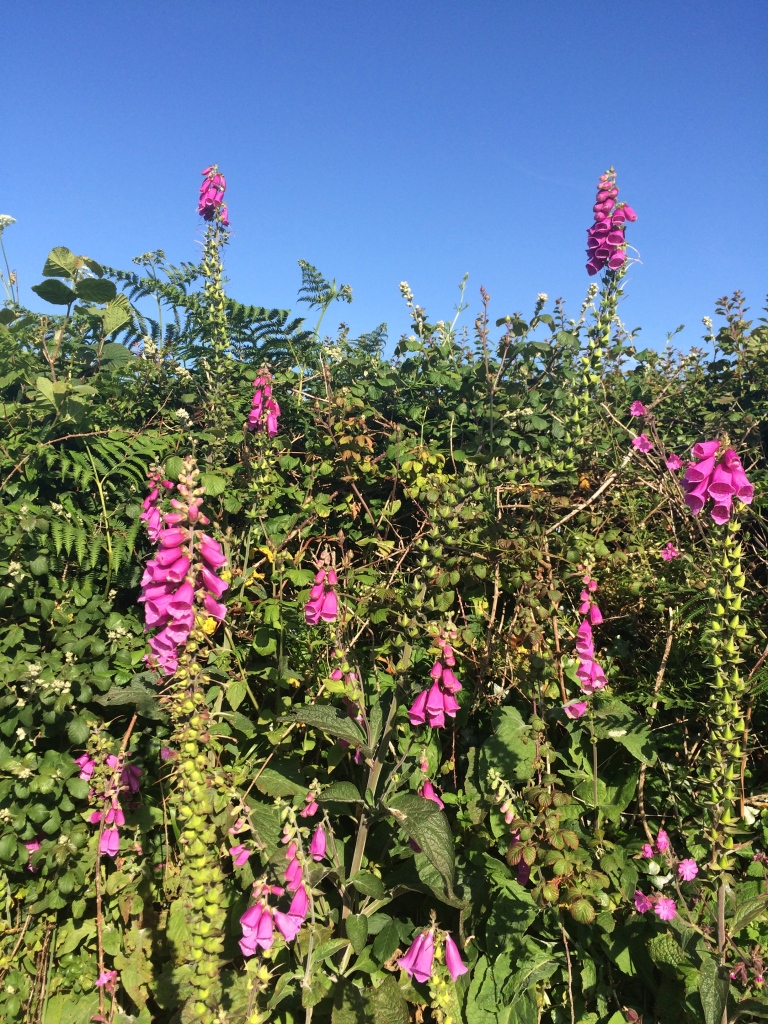 Footpath and hedgerow foxgloves, Hartland Point
Footpath and hedgerow foxgloves, Hartland Point
We cannot help smiling because the sky is so blue and clean and everything around us bright and vigorous. The insects sound away gently and only the occasional papery circling of a pair of butterflies causes a ripple on this sweet English calm:
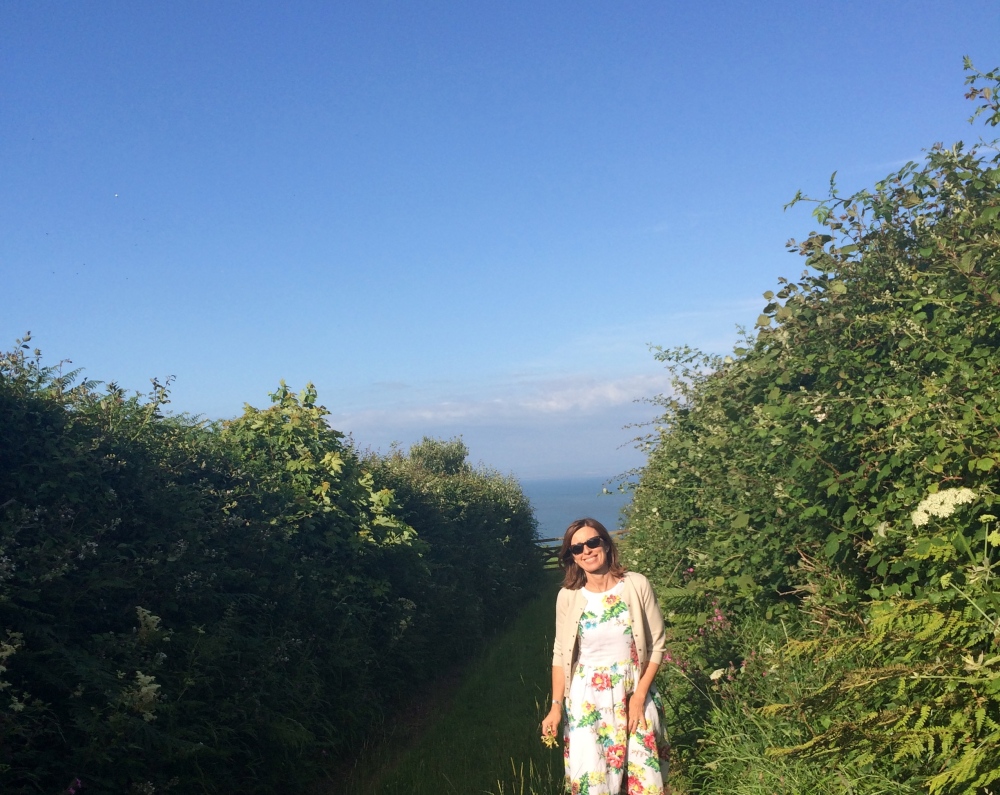 Smiling on a brilliant summer evening
Smiling on a brilliant summer evening
It is Sunday morning and we enter our friends’ beautiful old walled kitchen garden armed with trugs and old ice cream cartons. It has been raining but layers of heavy black cloud sit playfully above the slice of blue sky that heralds an imminent change in the constantly switching weather.
It is a crumpled shorts and old waterproof kind of day. My husband Nick and our old friend Mark are as happy as five year olds plunging their way into the dripping foliage to dig up the first of this year’s Charlotte potatoes.
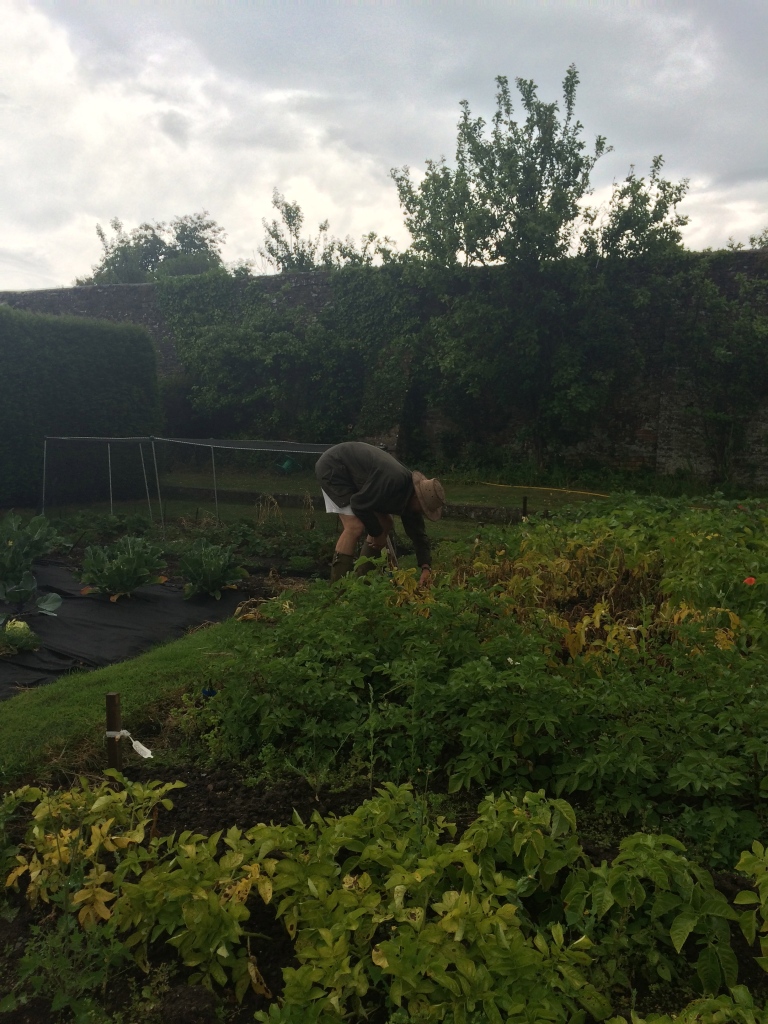
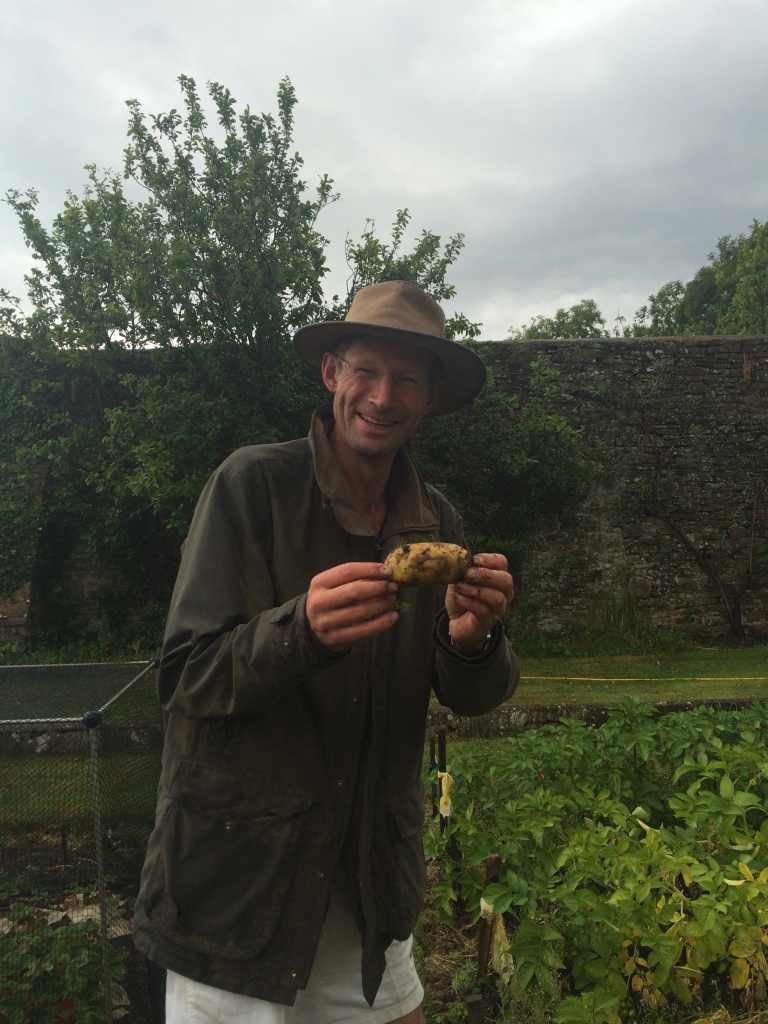 Mark proudly showing off his first Charlotte potato
Mark proudly showing off his first Charlotte potato
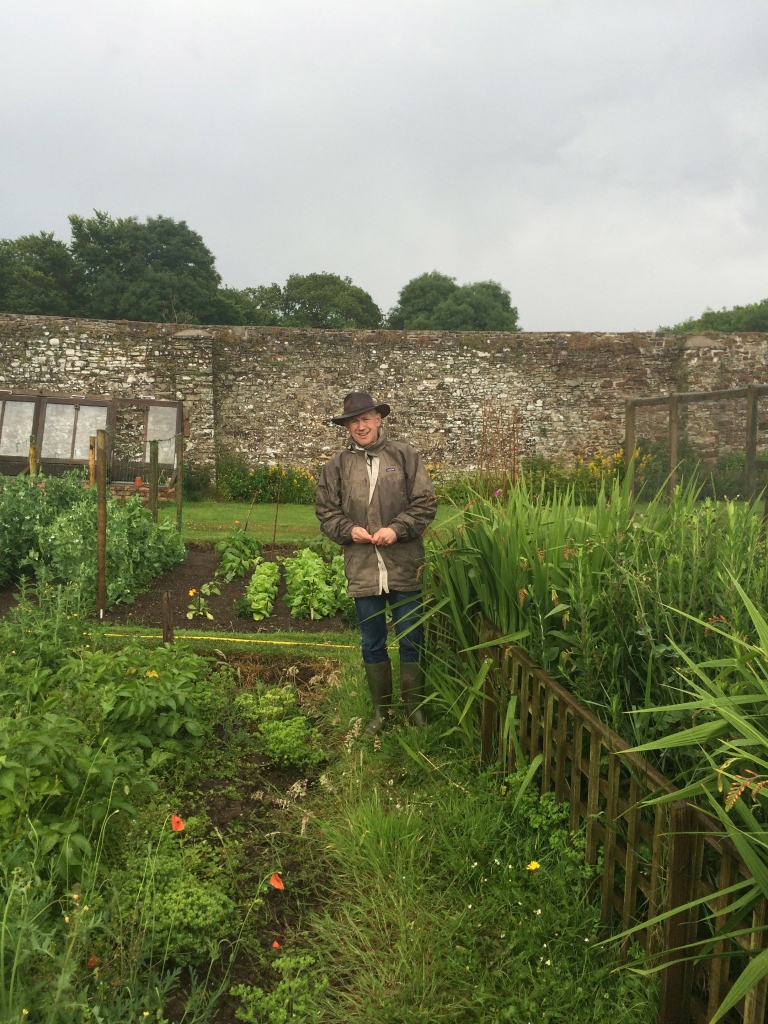
His assistant Nick professionally waterproofed and ready for action
There is an intoxicating sense of home and tireless productive order – clipped yew hedges, a pair of abundant classic herbaceous borders about to erupt with flame red crocosmia, and sweet multi-generational conversations in the fruit cage as we pick fruit to provide for an enormous bowlfull of lunchtime raspberries and redcurrants.
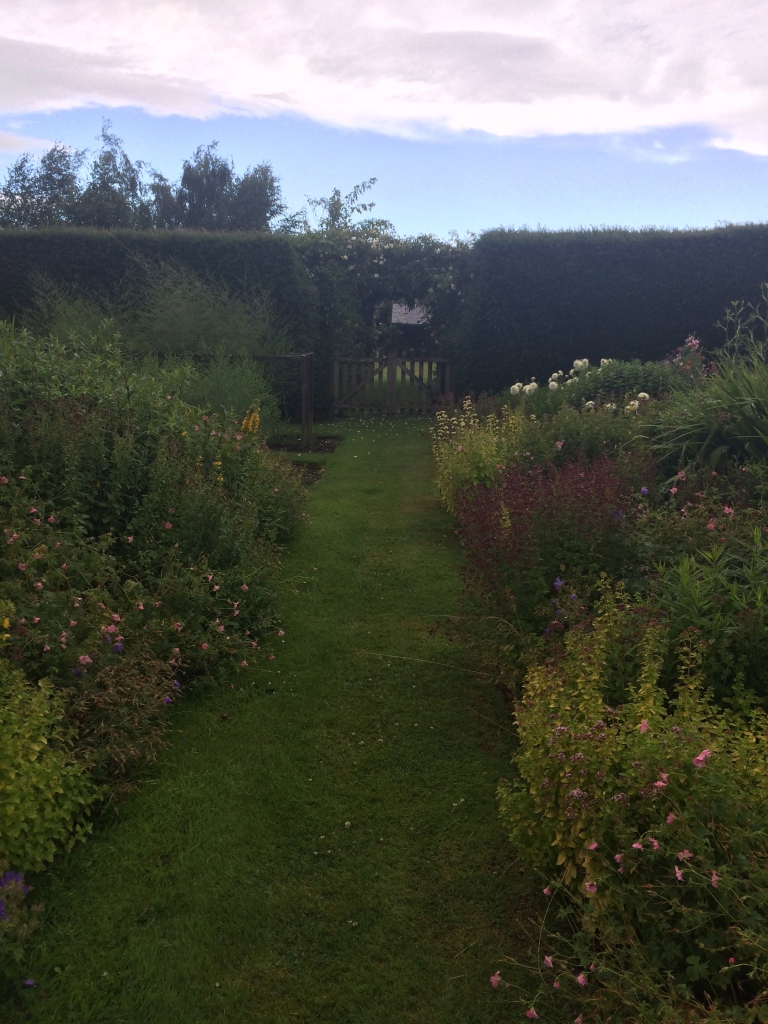 Classic herbaceous borders about to erupt with flame red crocosmia
Classic herbaceous borders about to erupt with flame red crocosmia
Our walk along the beach at Peppercombe that afternoon is a radiant stride across livid black and brilliant green seaweed over red stone.
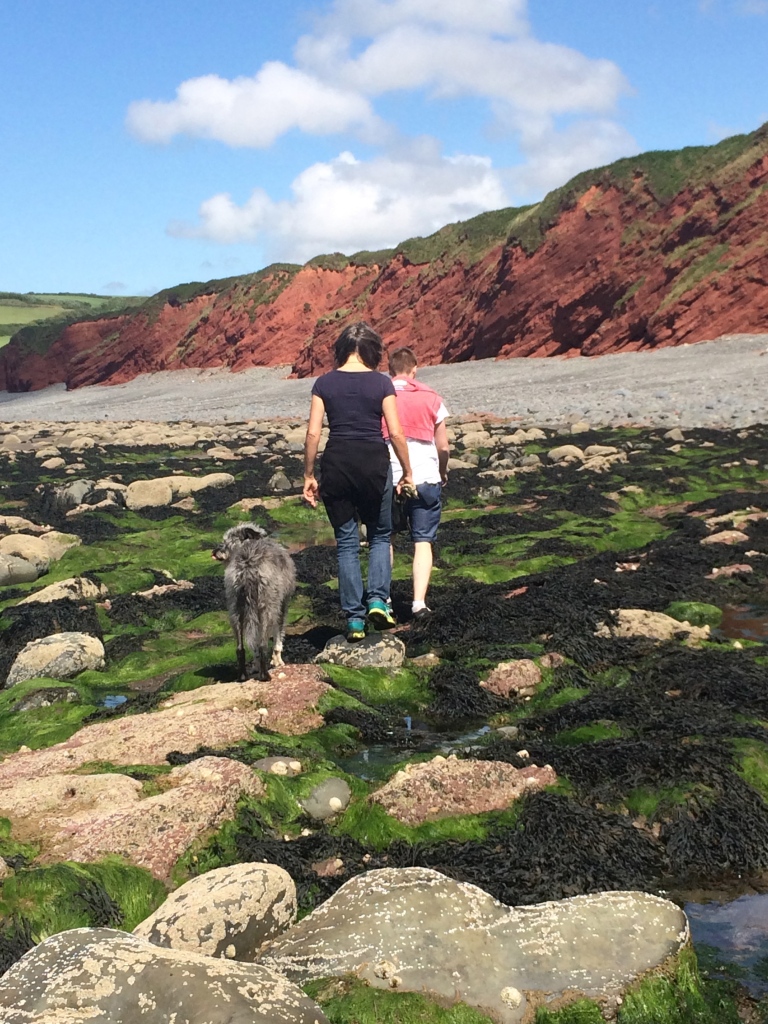
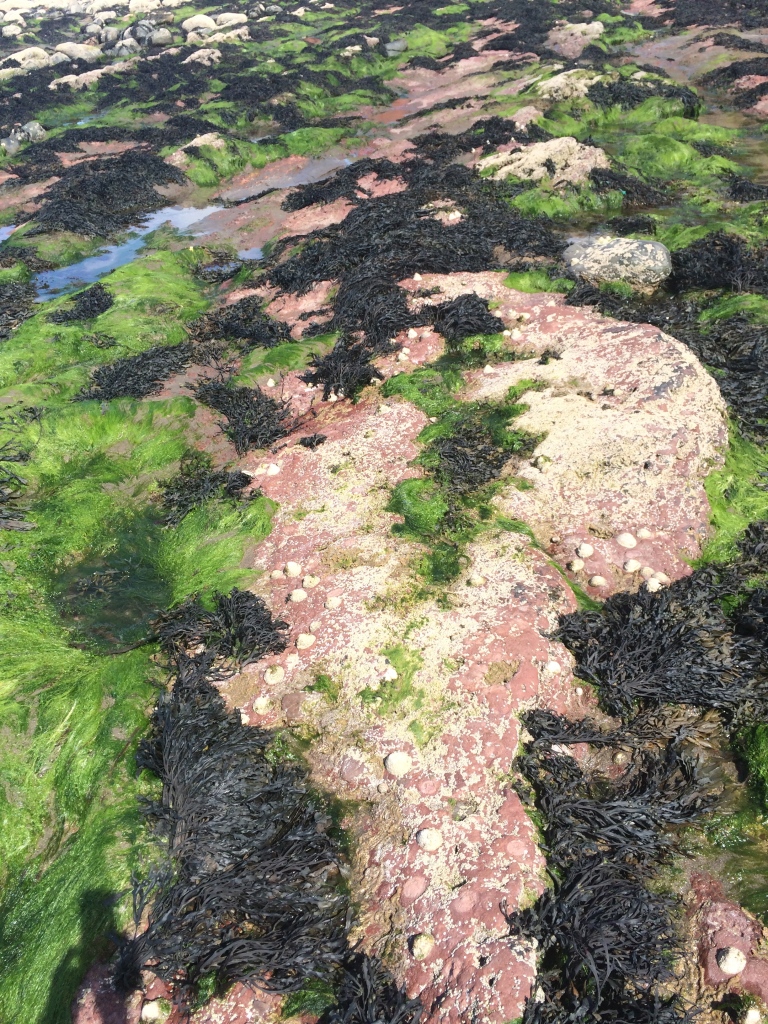 Livid black and brilliant green seaweed over red stone at Peppercombe Beach, North Devon
Livid black and brilliant green seaweed over red stone at Peppercombe Beach, North Devon
Back in South London I head out to Ruskin Park the following day for some Monday morning exercise. Ruskin Park is a practical sloping piece of London park nestling next to King’s College hospital. It is threaded through, as usual, with lose chains of commuters and dog walkers. I turn a well worn corner and am quite amazed to find myself in a completely wonderful garden at the centre of the park:
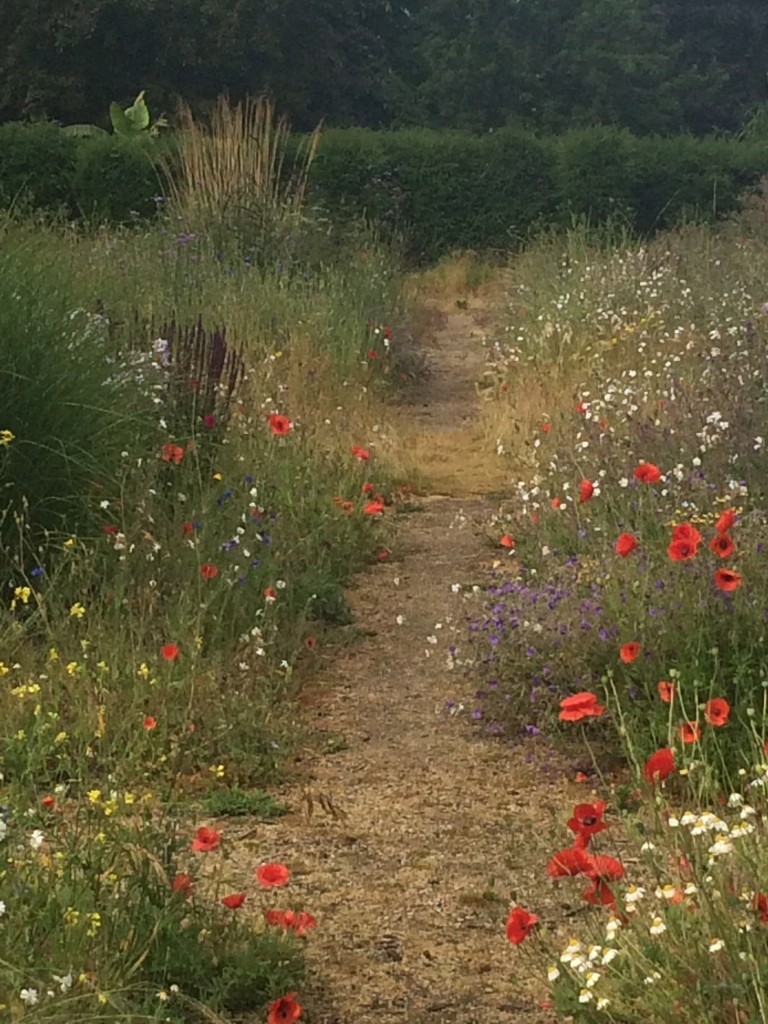
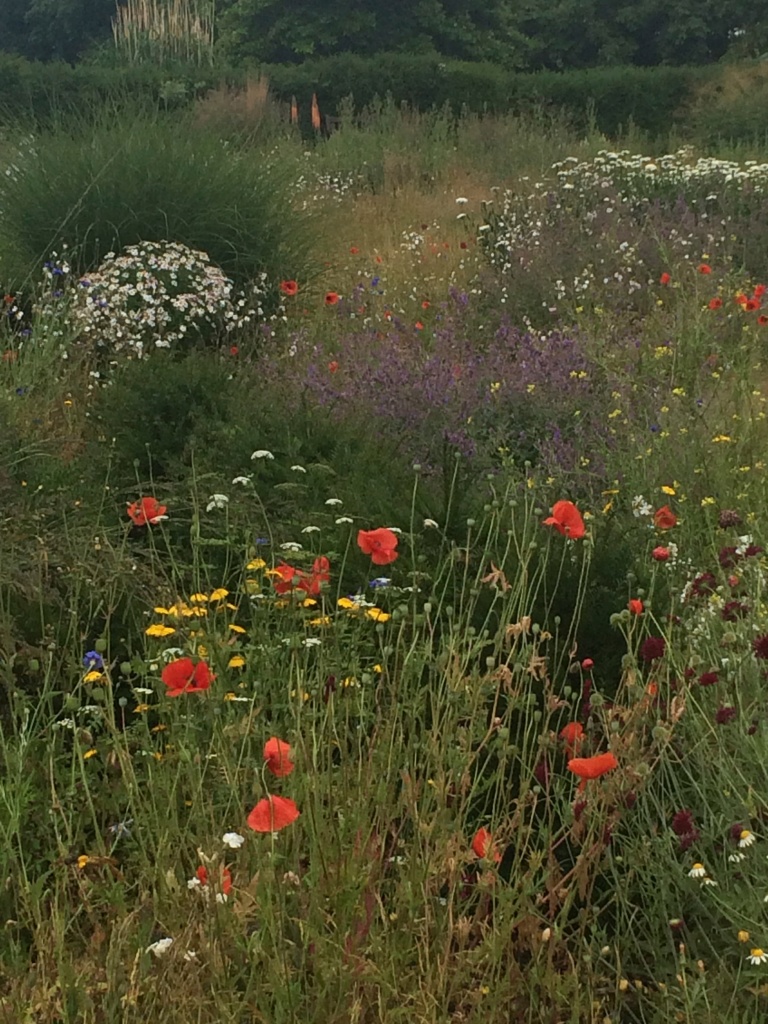
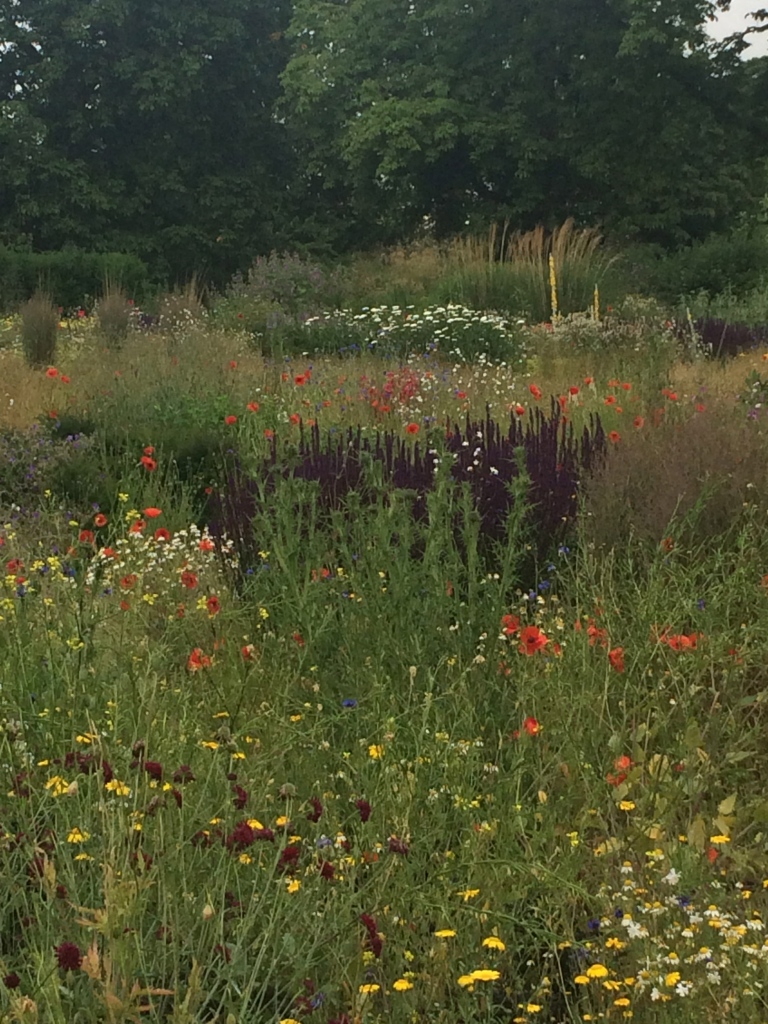 Uplifting planting at the centre of Ruskin Park, July 2015
Uplifting planting at the centre of Ruskin Park, July 2015
My mood switches from Monday morning list-making to a technicolor daze. This is powerful exuberant planting with perfectly judged structural pockets of deep purple salvias, gorgeous uplifting stands of rich orange Eremerus (foxtail lily), and airy golden and dusky red grasses punctuated by heads of dancing scarlet poppies.
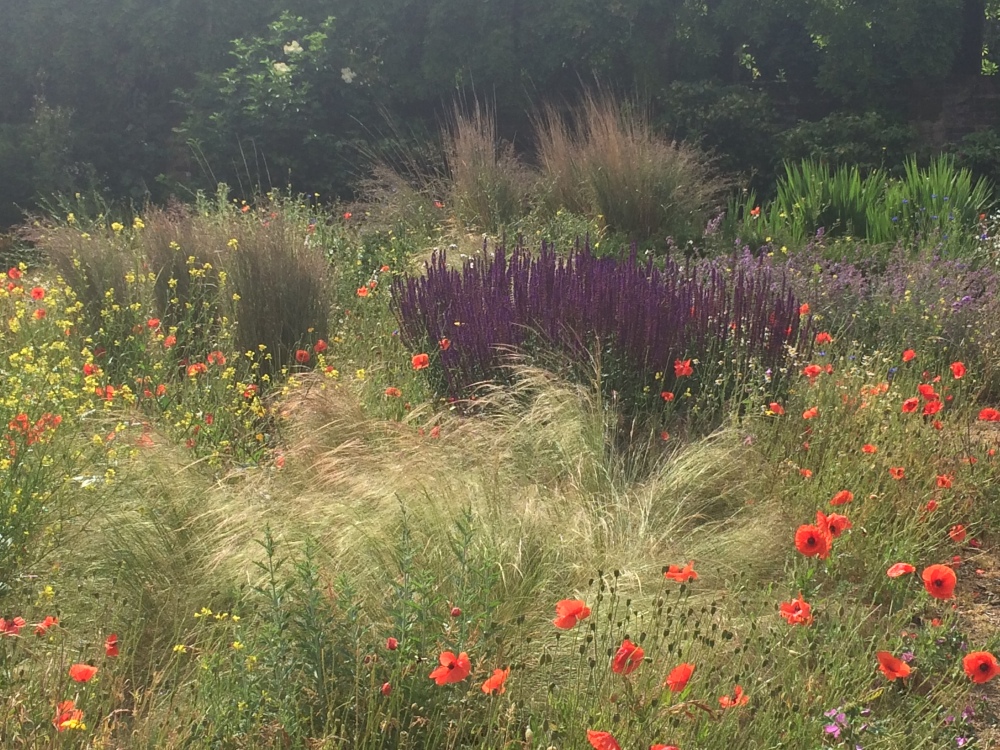 Deep purple Salvia with Stipa tenuissima and poppies
Deep purple Salvia with Stipa tenuissima and poppies
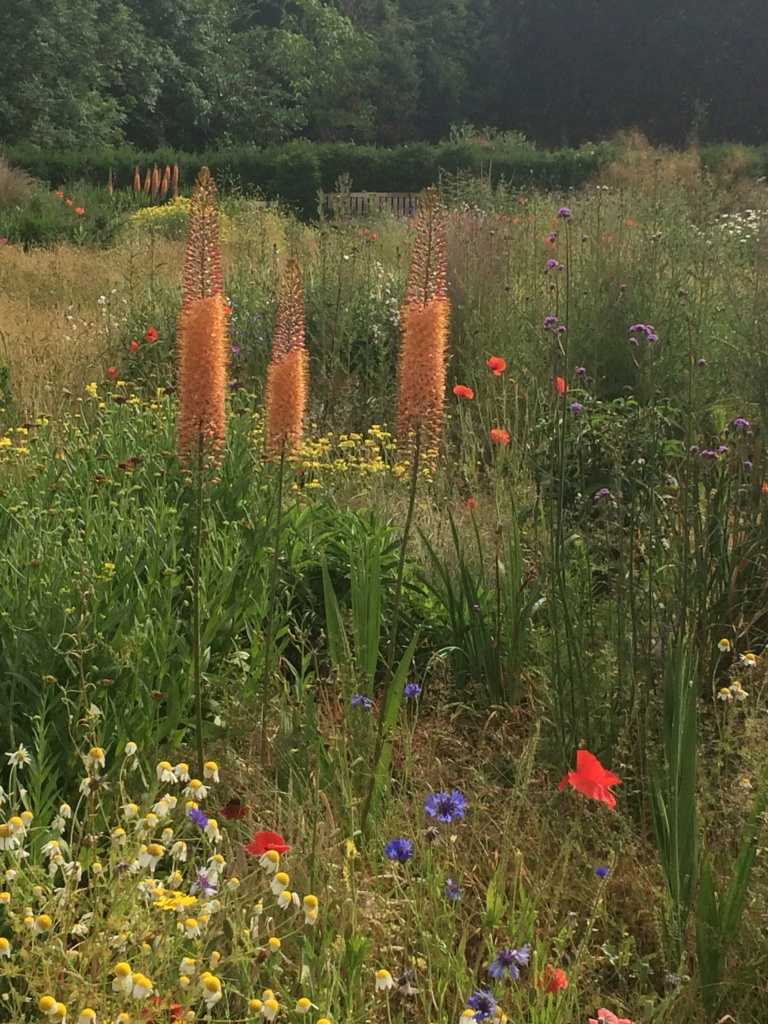 Stands of orange foxtail lilies amongst the planting at Ruskin Park
Stands of orange foxtail lilies amongst the planting at Ruskin Park
The garden does not, it has to be said, relate to anything else in the park, but as a stand alone enterprise it is a generous, beautiful, heartwarming surprise and makes my week.
We spend the weekend on an almost hidden stretch of North Norfolk coast. Here, beyond the doughnut stands and caravans, a tiny town of charming timber-clad houses, some of them extensions of wooden boats, nestles behind the dunes.
I love the salty pebbly simplicity of this place. Earlier in the year there is sea holly and horned poppy to admire, but by high summer I am happy just to watch our lengthening evening shadows stretch across the beach.
Shadows on the beach at Heacham, North Norfolk
The next day, walking inwards from the coast, I am smitten by a row of neat mature oaks marking the boundary of a wavering sheet of ripening wheat.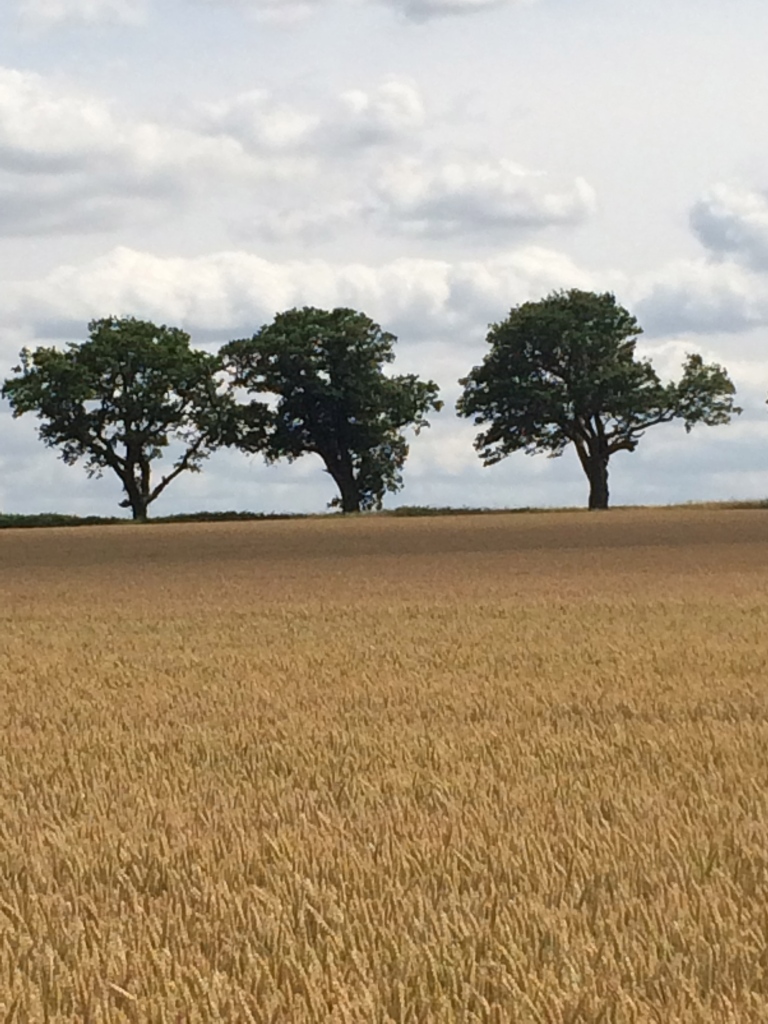
Oak trees and ripening wheat, Heacham, North Norfolk
A four hour flight on Monday morning and we are transplanted to the island of Zakynthos, Greece. A happy diet follows: rich blue sky, glittering sea, fresh orange juice, wine, olives, bread and honey …
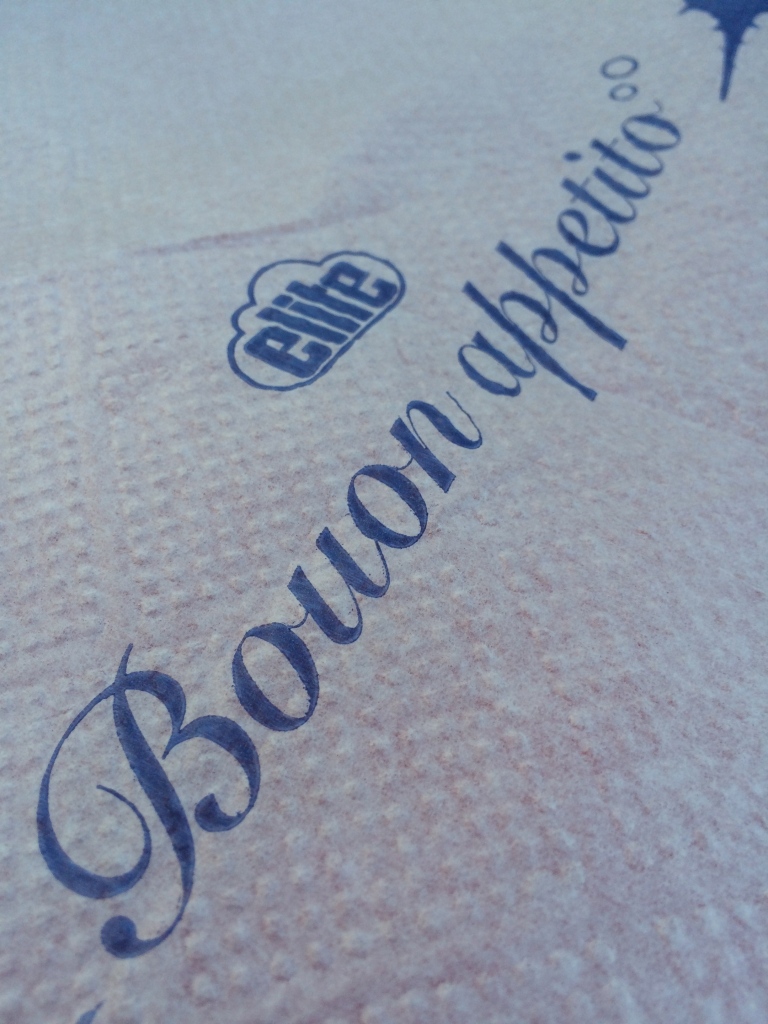
 On holiday on Zakynthos
On holiday on Zakynthos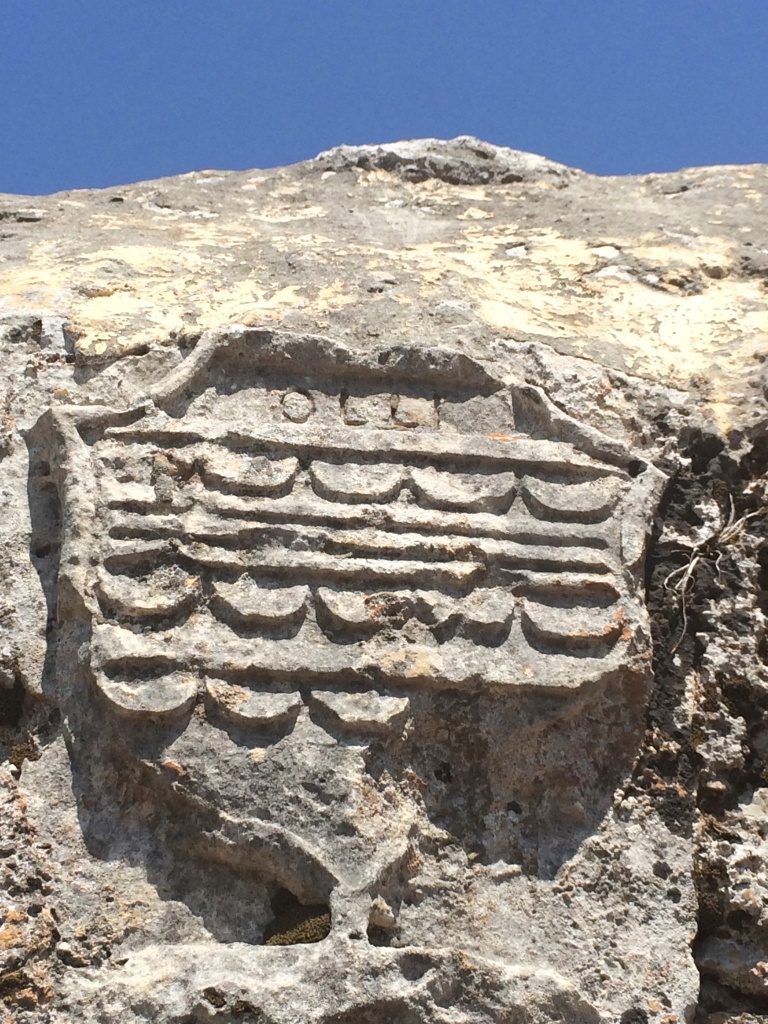 Decorative carving on a Venetian look out tower
Decorative carving on a Venetian look out tower
A ritual visit to a nearby monastery with flowing branches of wild caper plant (Capparis spinosa ) growing out of the stony walls.
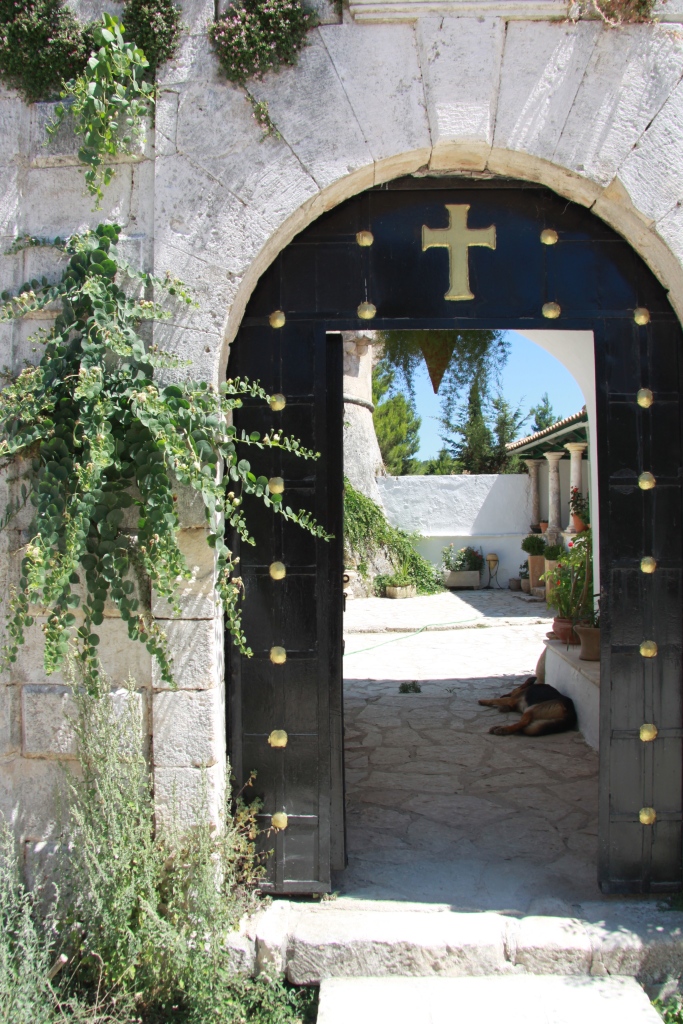
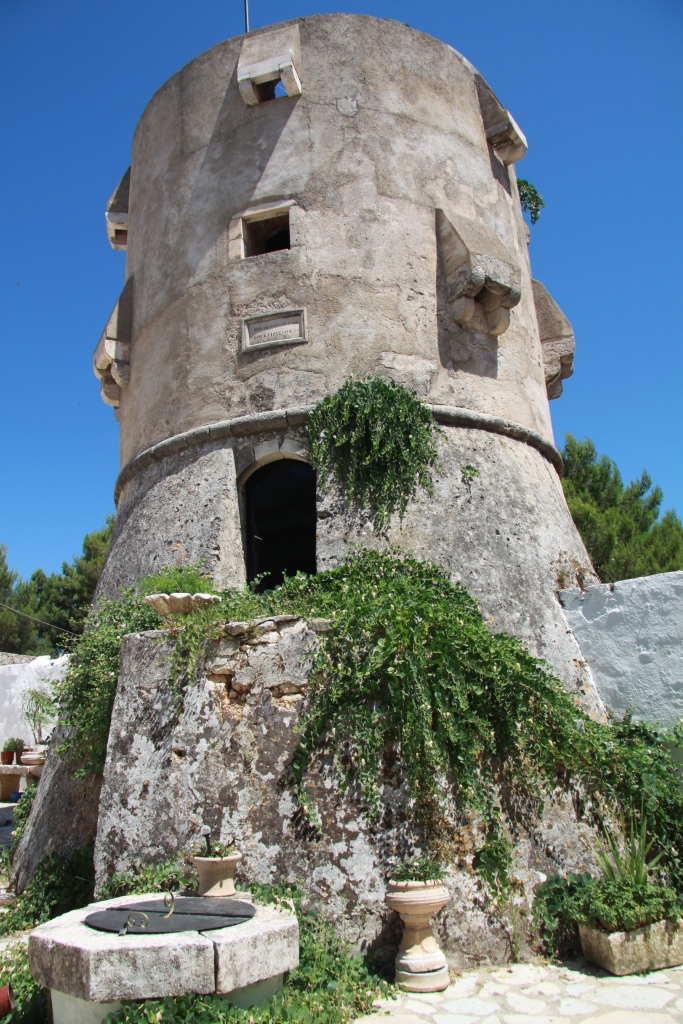
Wild caper plants growing out of the monastery walls
I remember again that the capers we buy in tiny jars, salted or in brine, are unopened flowerbuds rather than fruits.
Caper leaves and buds
I love the neatness of the leaf arrangement of the caper plant and the inky shadows the leaves cast on the dusty ground. I love too the delicate groups of self seeding umbels, a naturally elegant soft white against the stone coloured paint:
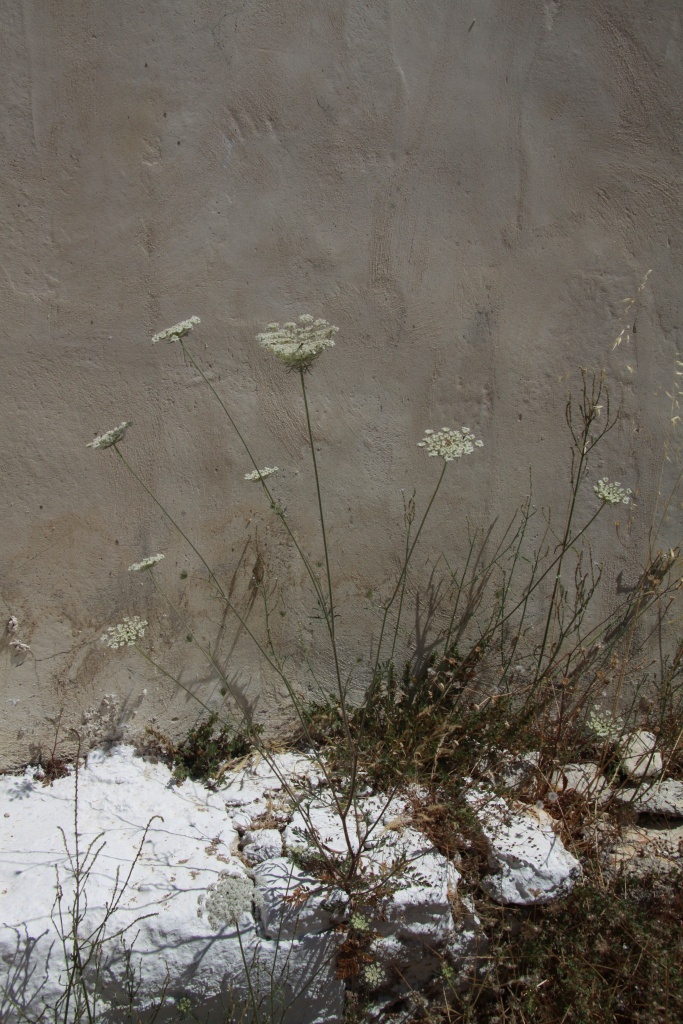 Wild umbellifer flowers against a monastery wall.
Wild umbellifer flowers against a monastery wall.
Walking up into the hills, the scent of sun warmed wild fennel and wild thyme is intoxicating.
I am entranced by the luminous yellow-green of the pine needles in the clear sunshine:
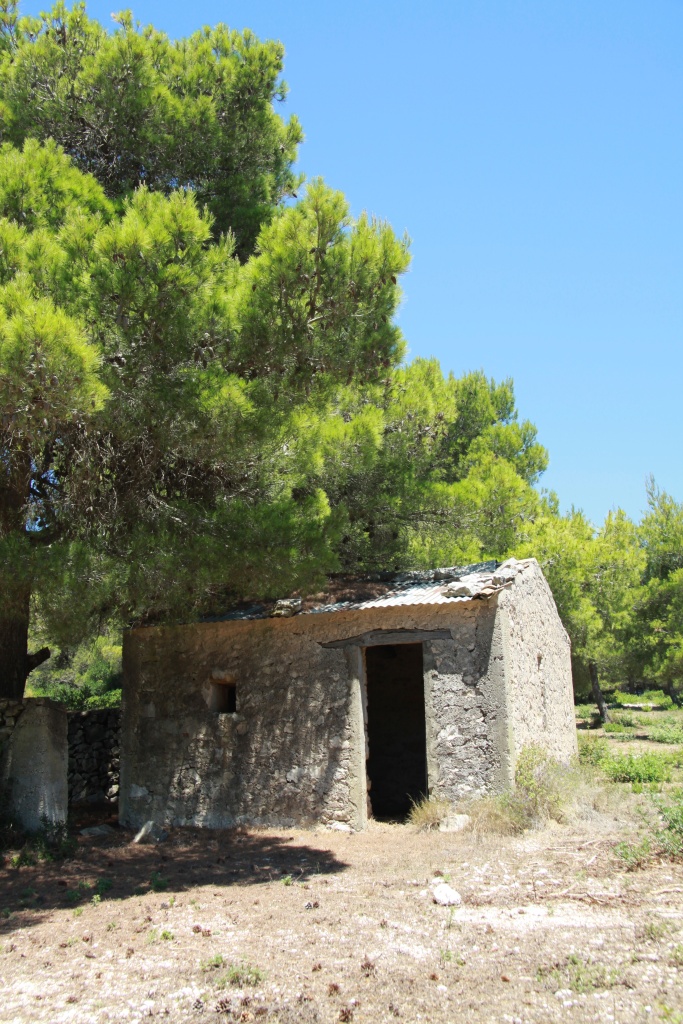
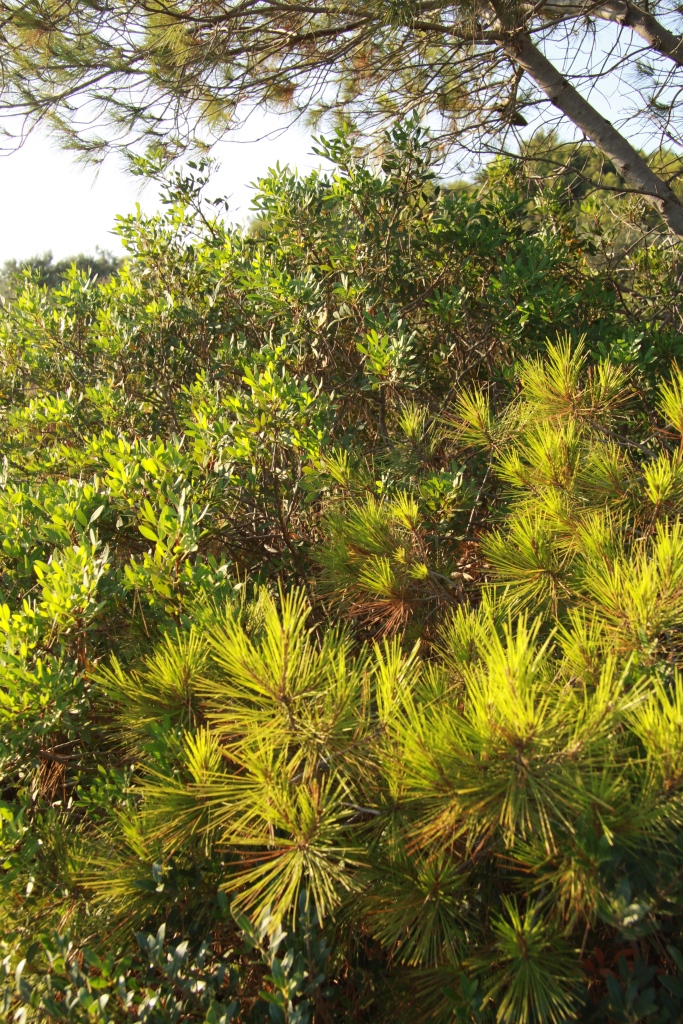 The distinctive yellow-green of pine needles, Zakynthos
The distinctive yellow-green of pine needles, Zakynthos
Delicate papery wildflowers and grasses grow amongst the olive groves and become more beautiful as the day progresses.
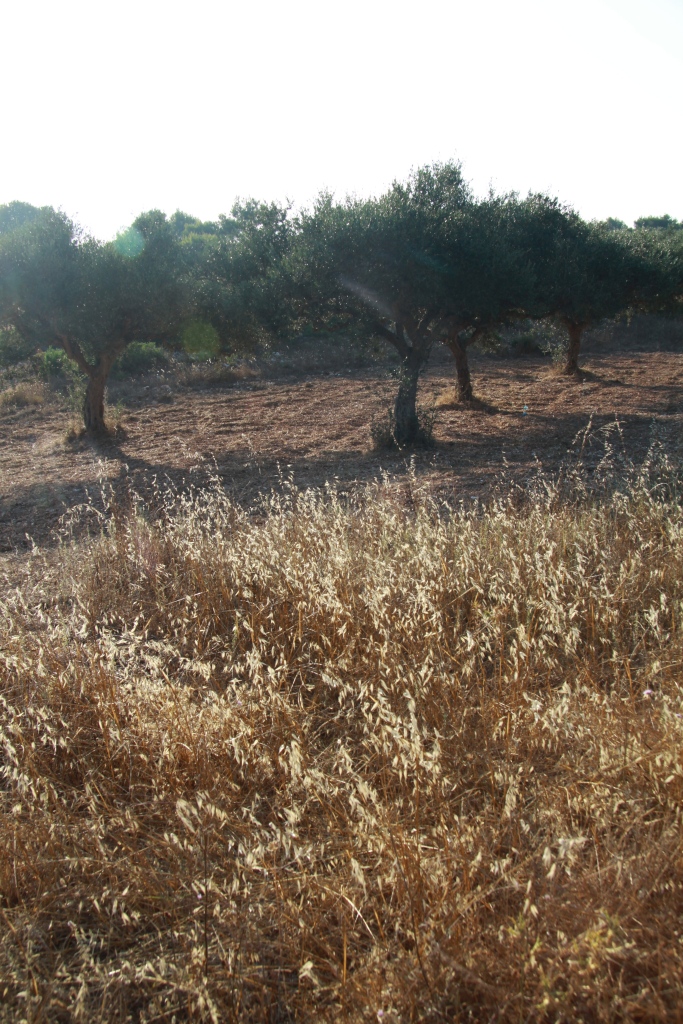
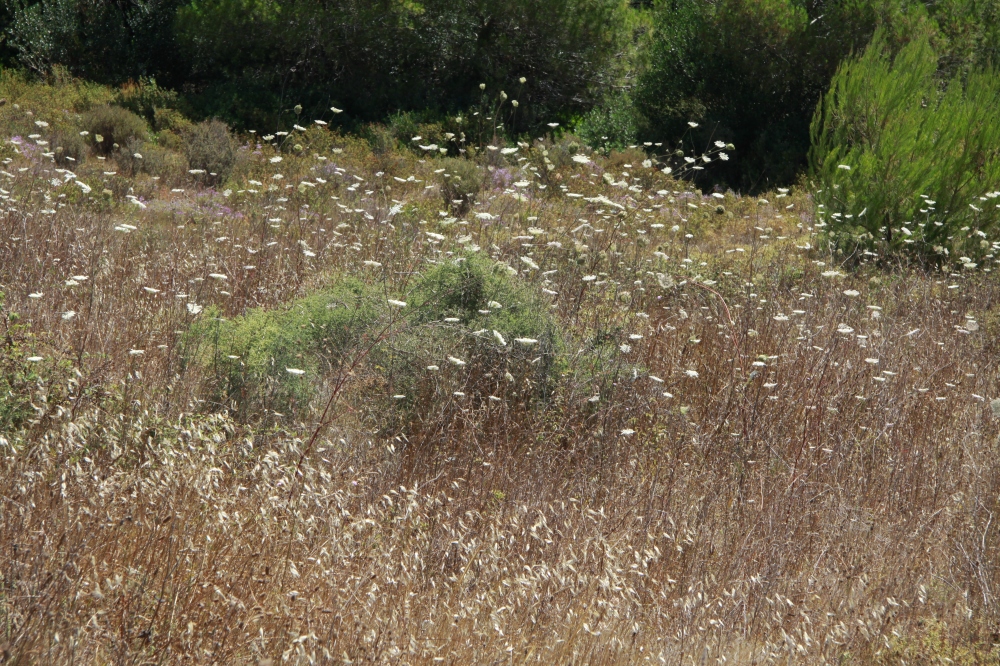
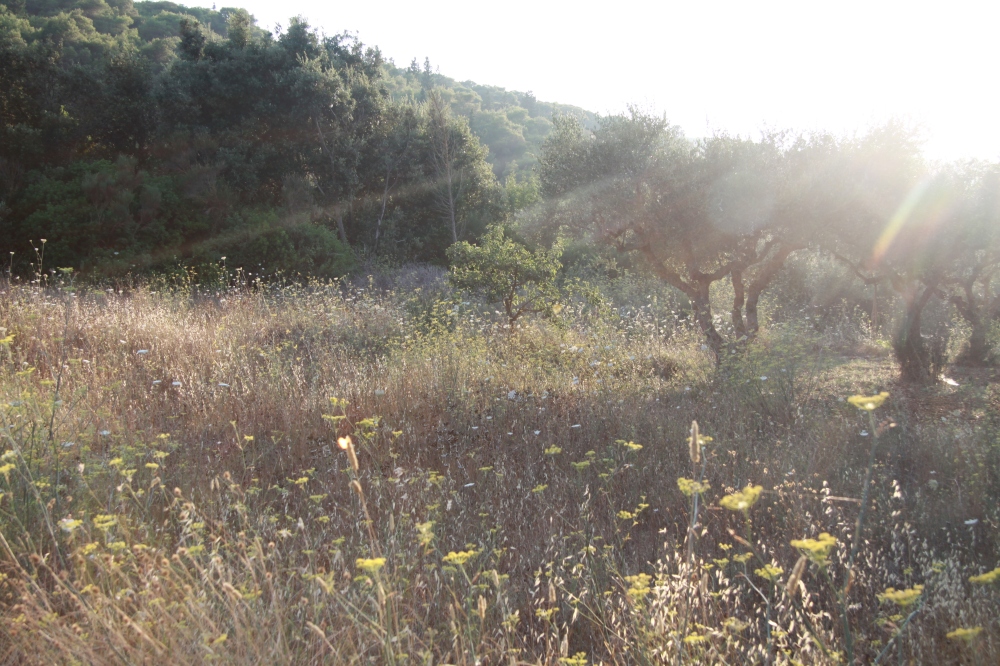
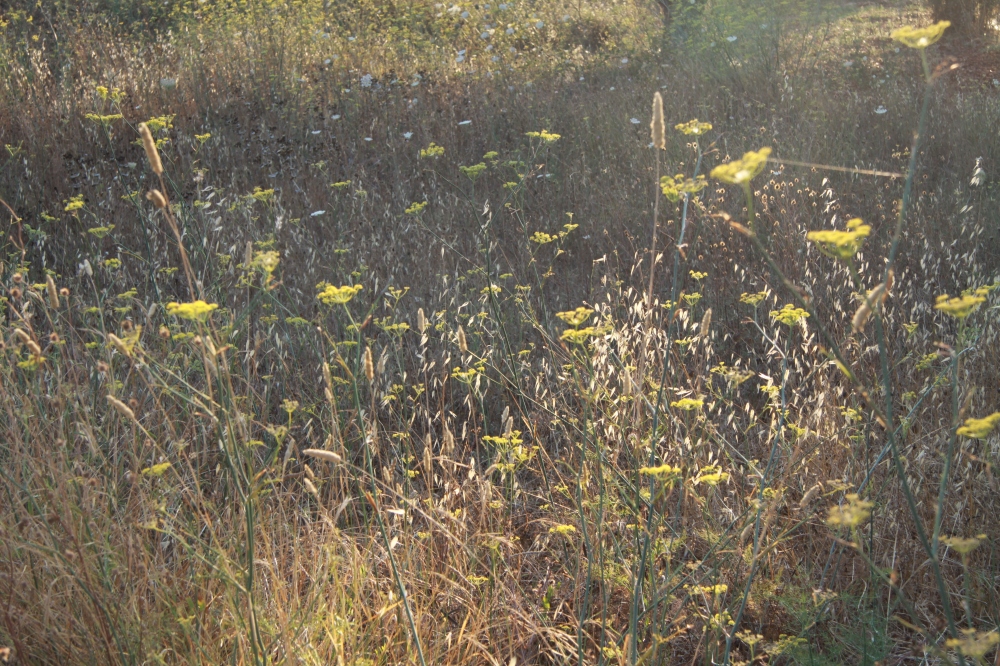
Grasses and wild fennel amongst the olive groves
The effect of the changing light is powerful. The early evening sunlight backlights the ragged seedheads of grasses and weeds and transforms them into moments of delicate loveliness:
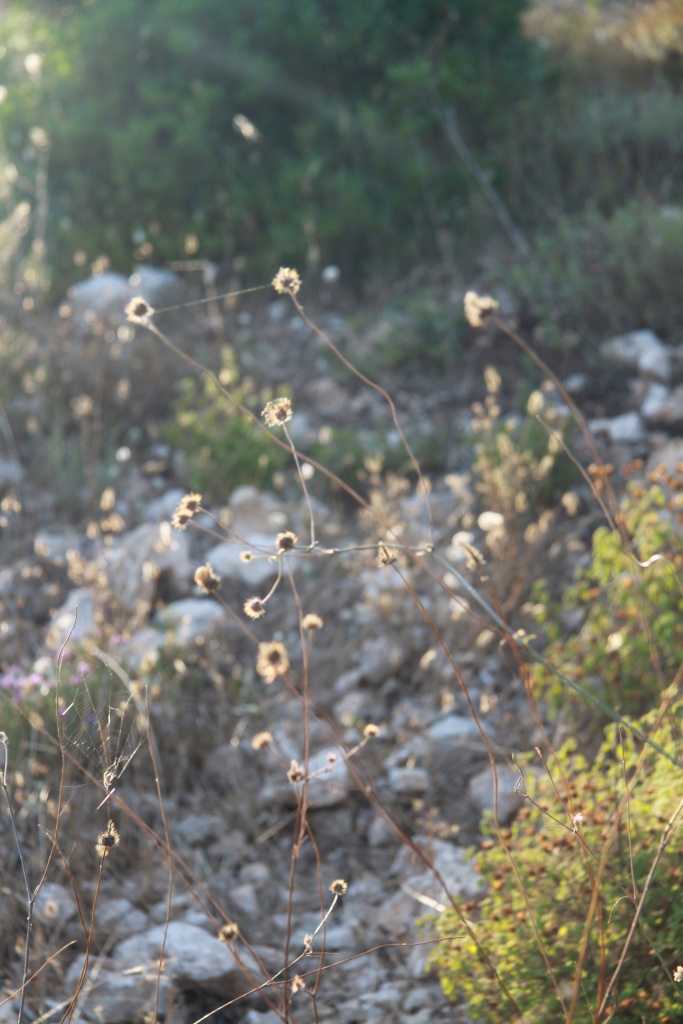
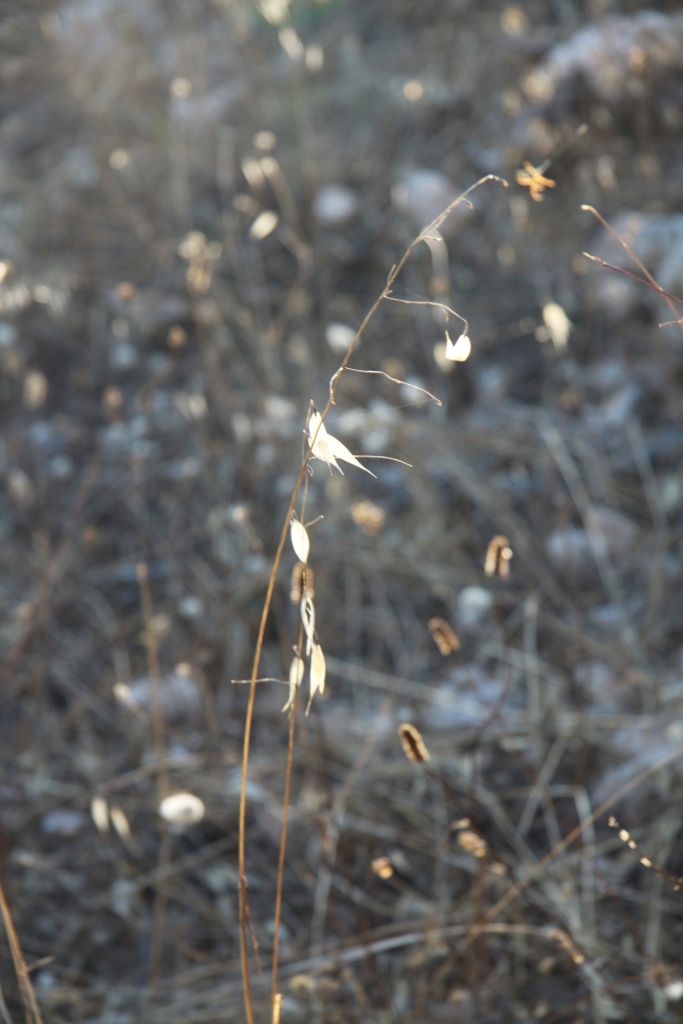
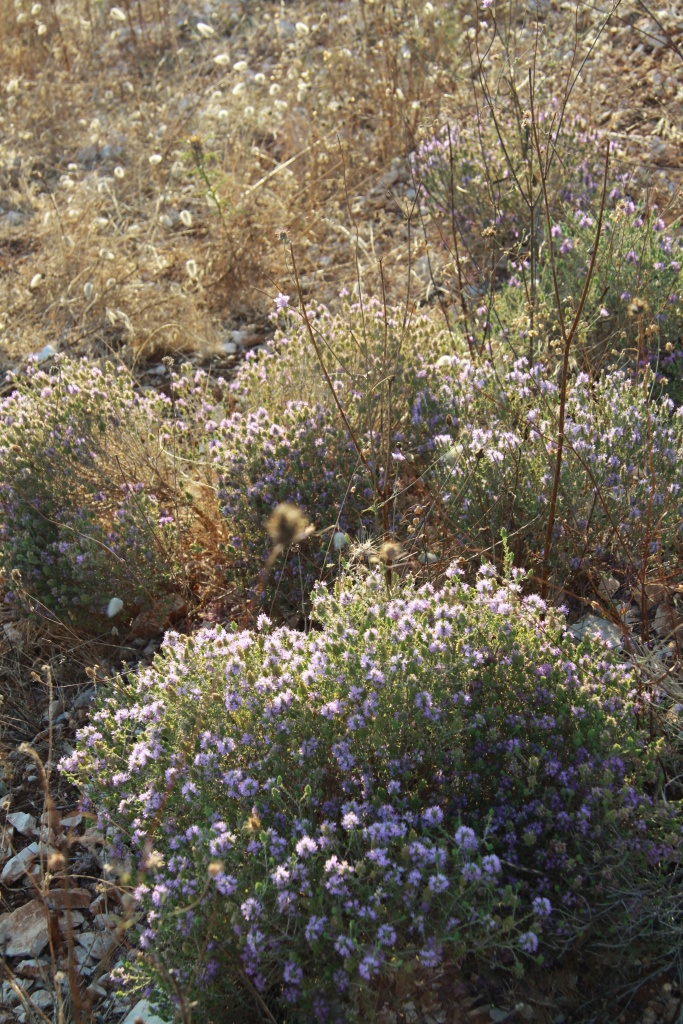
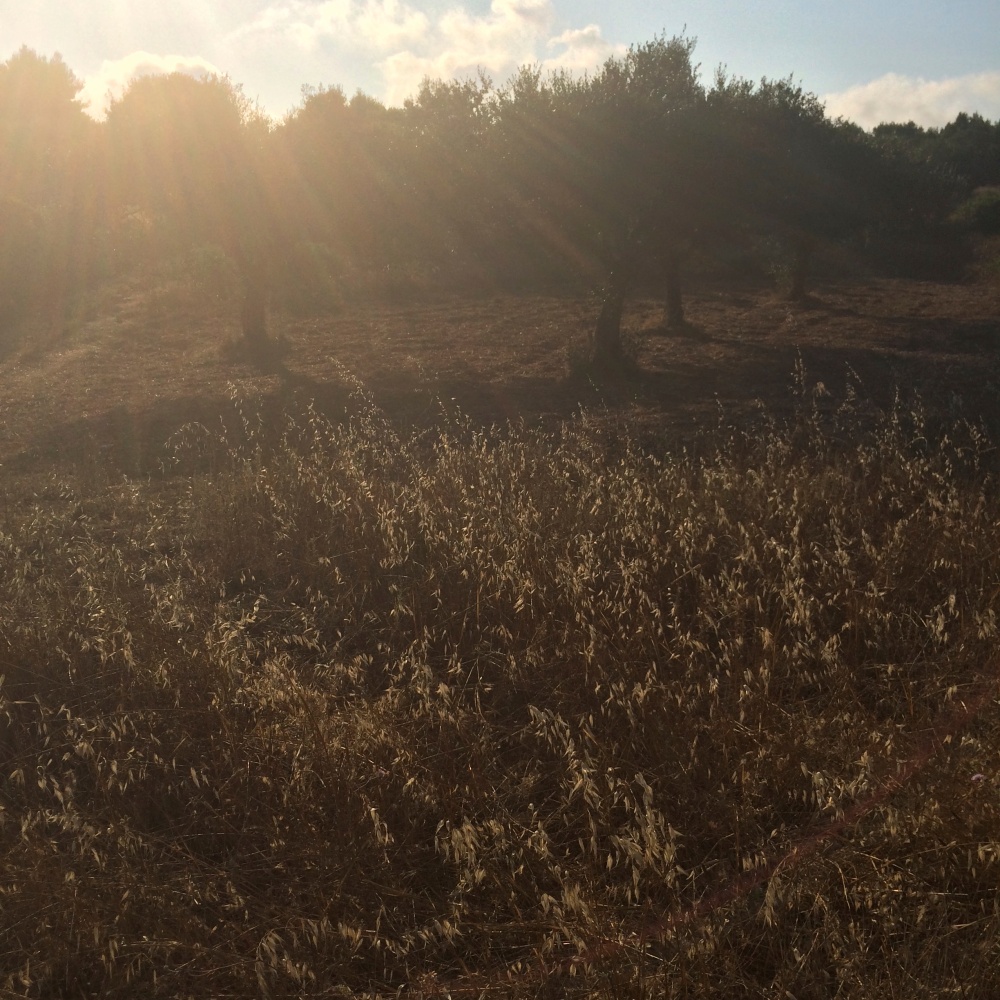 Backlit grasses, seedheads and mounds of wild thyme in the lowering sunlight.
Backlit grasses, seedheads and mounds of wild thyme in the lowering sunlight.
Later still, as we walk out to supper, the grasses by our path are a quietly fluttering field of ivory dashes in the dusk.
Sitting at a café catching the sunset, the stripy pale blue and pinky-orange light transforms everything – power cables, pot plant foliage, a rusty pergola – into elegant silhouetted patterns. Even the formica café tables become gorgeous glassy pools of reflected light.
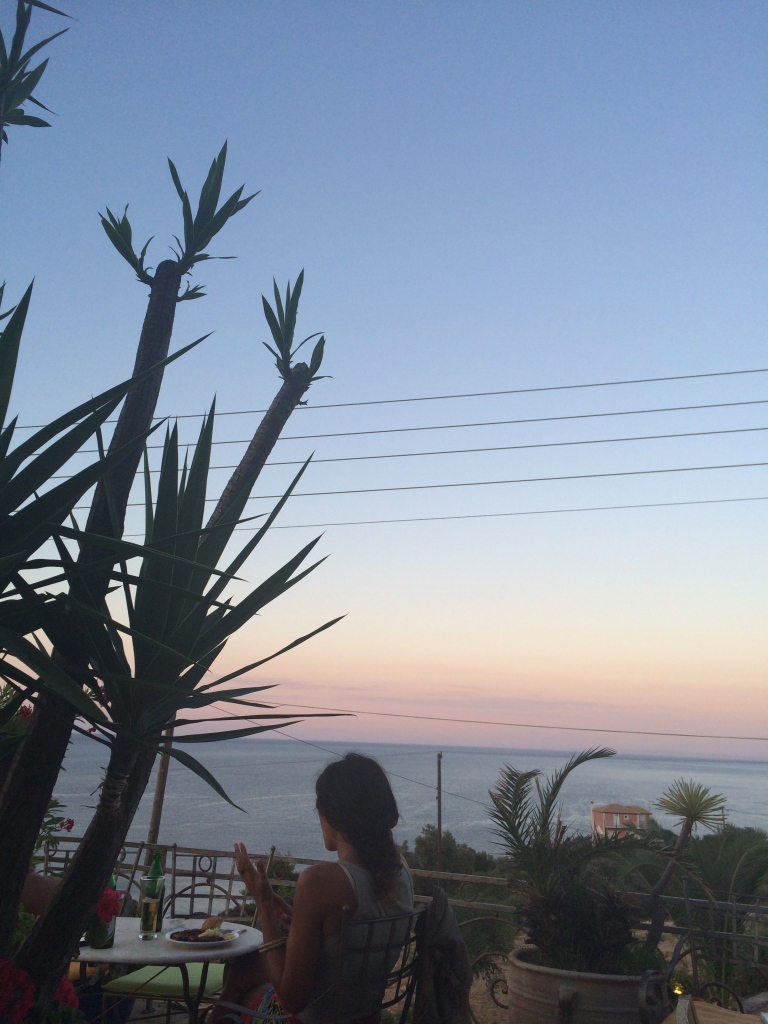
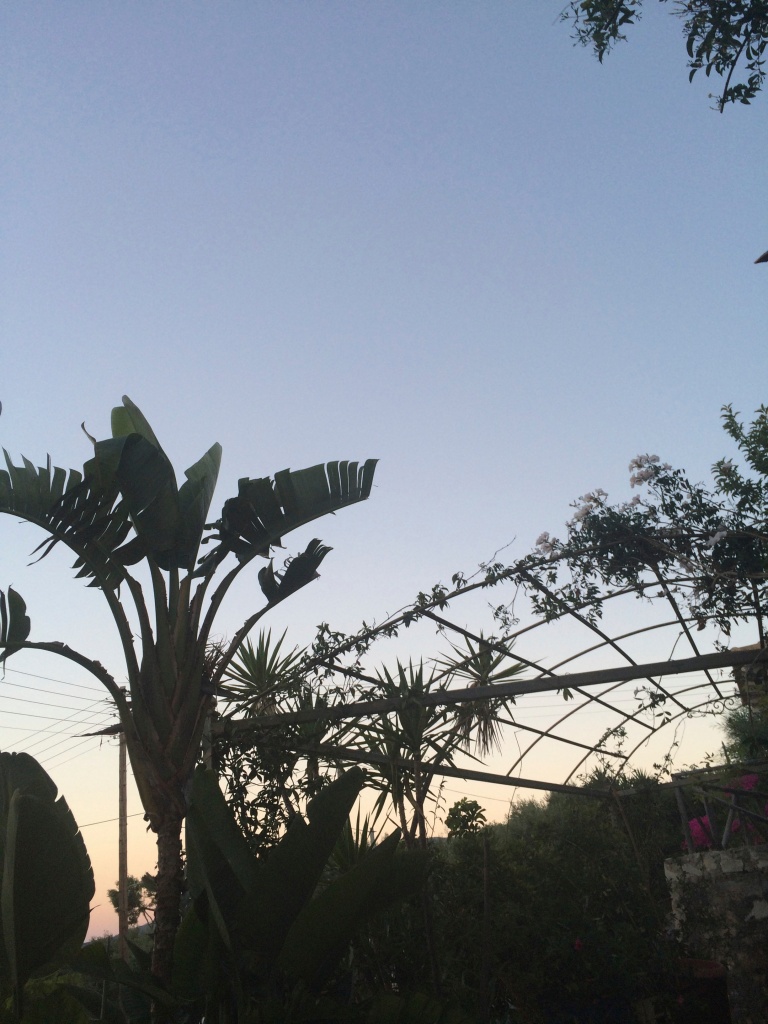
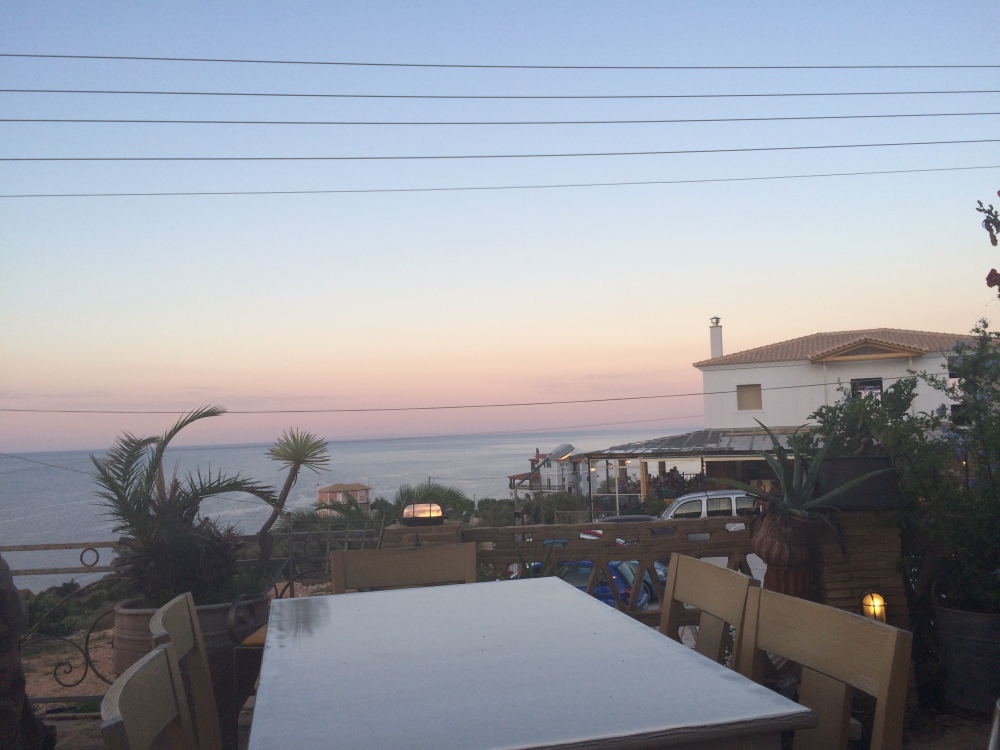 The sunset transforms even the formica café table
The sunset transforms even the formica café table
And before bed the moon is perfectly framed by a pair of palm leaves:
The moon framed by palm leaves, Zakynthos
It is mid August and I head to the 18th Century country house-turned-gallery, Compton Verney in Warwickshire. I am keen to see ‘The Arts and Crafts House: Then and Now’: an exhibition which explores the creation of the ideal home in the Arts and Crafts movement, the link between house and garden, and how the garden and nature were an important source of inspiration.
As part of the exhibition, the gallery has commissioned eminent landscape and garden designer Dan Pearson to create a wild flower meadow on the West Lawn of the house taking William Morris’s iconic Trellis wallpaper as his starting point.
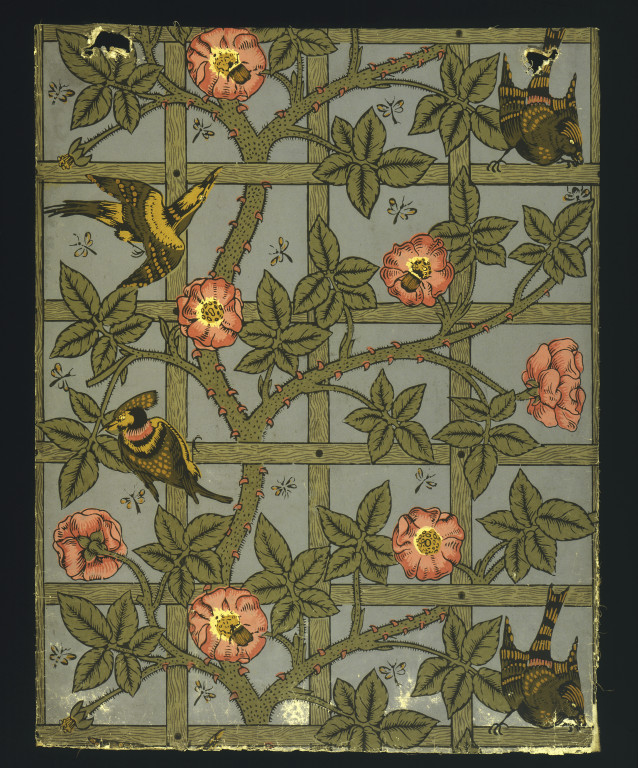 William Morris’s ‘Trellis’ Wallpaper – part of the V&A Museum Collection
William Morris’s ‘Trellis’ Wallpaper – part of the V&A Museum Collection
Carrying further images of William Morris’s outstanding rhythmic sense of colour and design in my head, I am excited to know how Dan Pearson – who has recently overseen a dreamy reinterpretation of a famous Gertrude Jekyll garden at the Lutyens designed Folly Farm in Berkshire – will have approached the commission.
Tiles and stained glass created for one of William Morris’s homes, The Red House
Part of the newly planted garden at Folly Farm, Berkshire. Visits to the garden can be booked via the NGS. Photograph from the NGS website
It is a dull grey English day and after a long drive up the M40, I am rather perplexed at the sight of three small circles of rather sickly-sweet coloured annuals looking uncomfortable and insignificant amidst a generous expanse of brass coloured grasses.
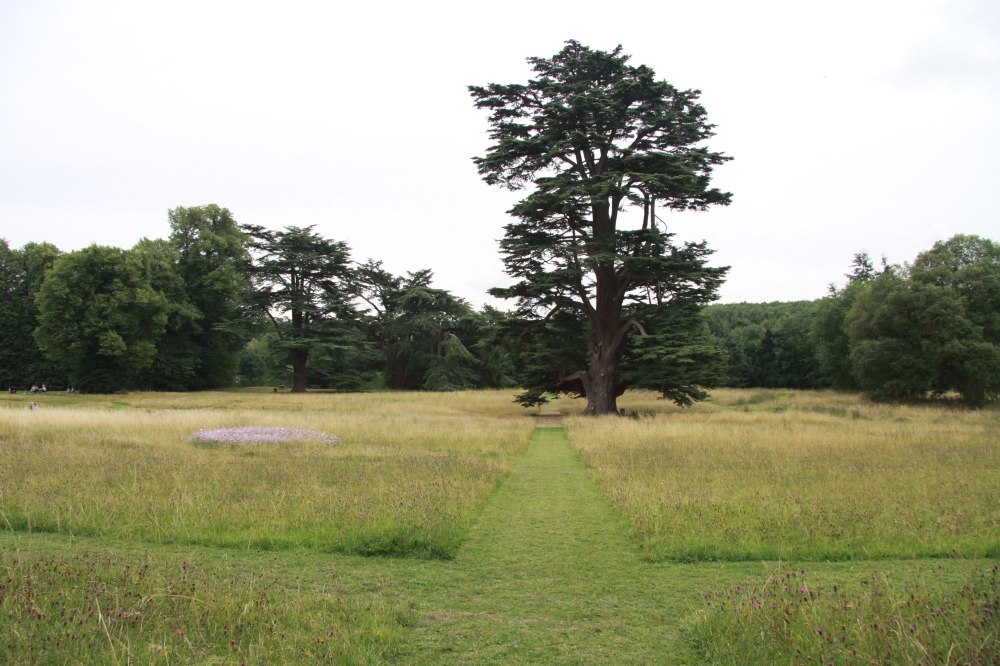
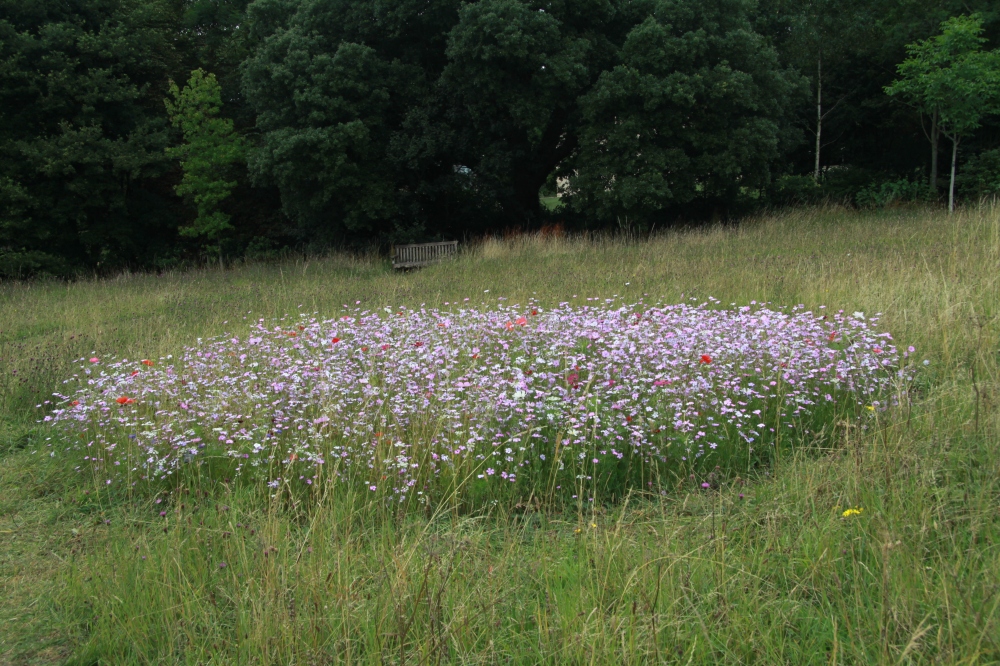
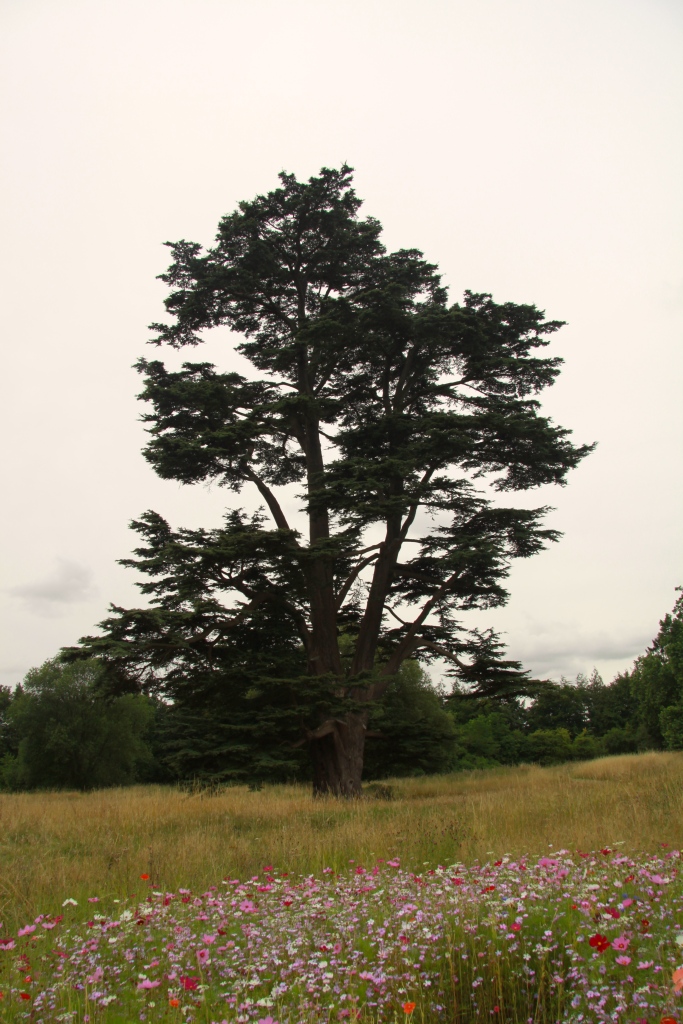
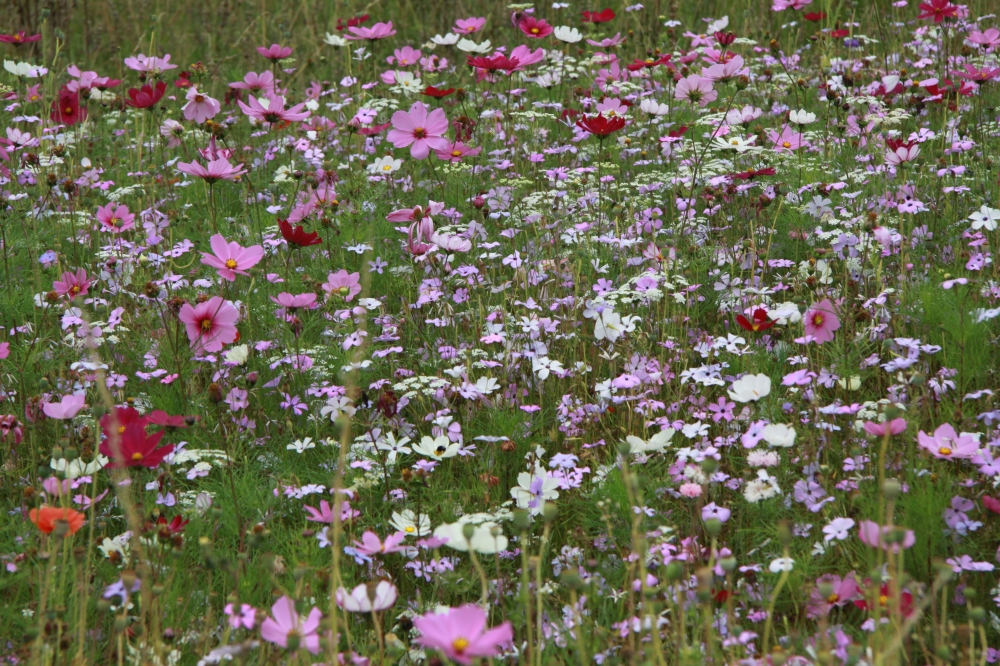 Dan Pearson’s Wild Flower Meadow at Compton Verney – the circles of brightly coloured annuals not quite working yet in tone or scale
Dan Pearson’s Wild Flower Meadow at Compton Verney – the circles of brightly coloured annuals not quite working yet in tone or scale
The grass has been organised into a network of neatly mown paths which echo the pattern of Morris’s Trellis design. Taking my eye away from the smartie coloured circles, this device is clearly effective and there are glimmers here of a much more subtle palette.
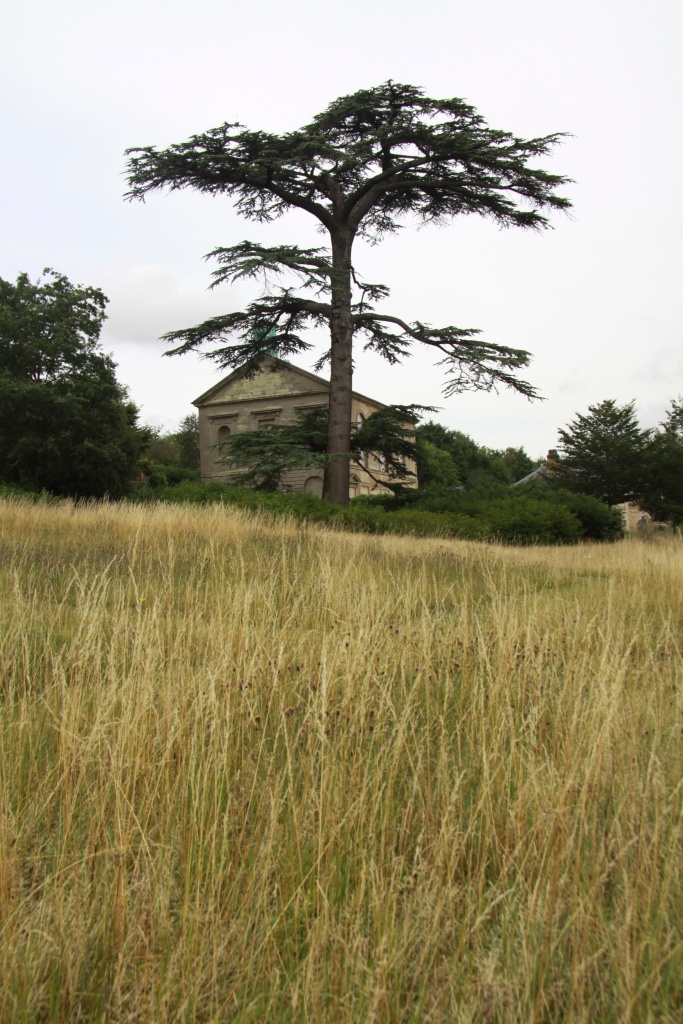
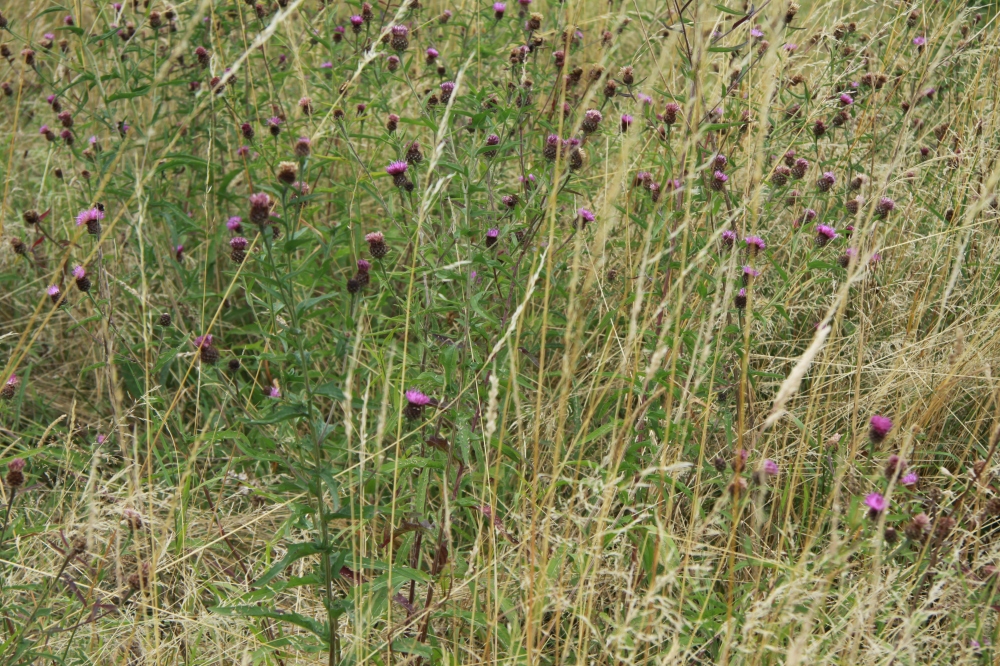
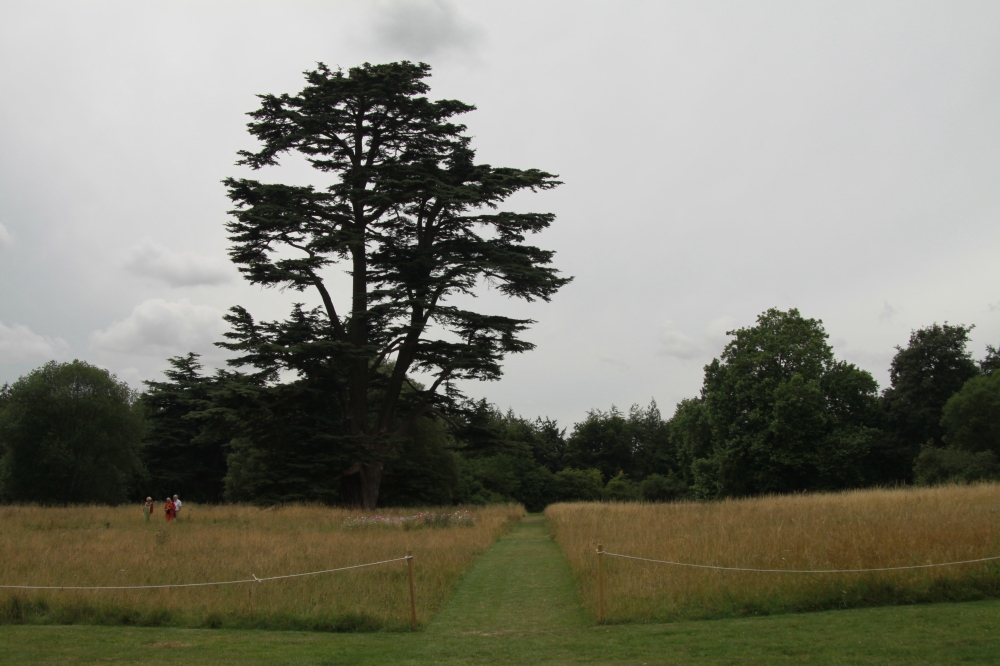 Soft grasses with wild flowers and one of the network of mown paths, Dan Pearson’s wildflower meadow, Compton Verney
Soft grasses with wild flowers and one of the network of mown paths, Dan Pearson’s wildflower meadow, Compton Verney
I must have greater faith. Pearson is one of the most thoughtful designers of our generation and I remind myself that the carefully selected seed mix is expected to change in character every year until, after seven years or so, the meadow planting reaches a point of equilibrium. It is an honest idea and a worthy reflection of the Arts and Crafts reverence for nature. I leave to go inside the house, still wondering if the ‘Trellis’ meadow might not have a greater chance of success with some key structural planting in addition to the grass and seed mix – but I will be fascinated to see how it develops.
The ‘Arts and Crafts House’ exhibition is more easily uplifting. It is excellent to see the surprisingly chunky quality of a William Morris tapestry in the flesh – to see original Phillip Webb drawings for his Bexley home, The Red House, and to follow the connections between Morris and those inspired by him. For Lutyens and Jekyll (who was also much influenced by William Robinson’s ‘The Wild Garden’), there are contemporary and recent photographs of the garden at Folly Farm and a series of beautifully reprinted photographs by Gertrude Jekyll, including a covetable, delicate still life with white dahlias and white clematis which has a haunted Japanese quality.
I am introduced to ‘wandering architect’ Alfred Powell and his wife Louise. Alfred Powell made much of his living creating decorative designs for Josiah Wedgwood and Sons. The exhibition begins with his beautiful painted blue and white punch bowl and closes with a lovely gently quirky screen painted by Louise Powell which was originally made for a 1916 Arts and Crafts exhibition at Rodmarton Manor near Cirencester.
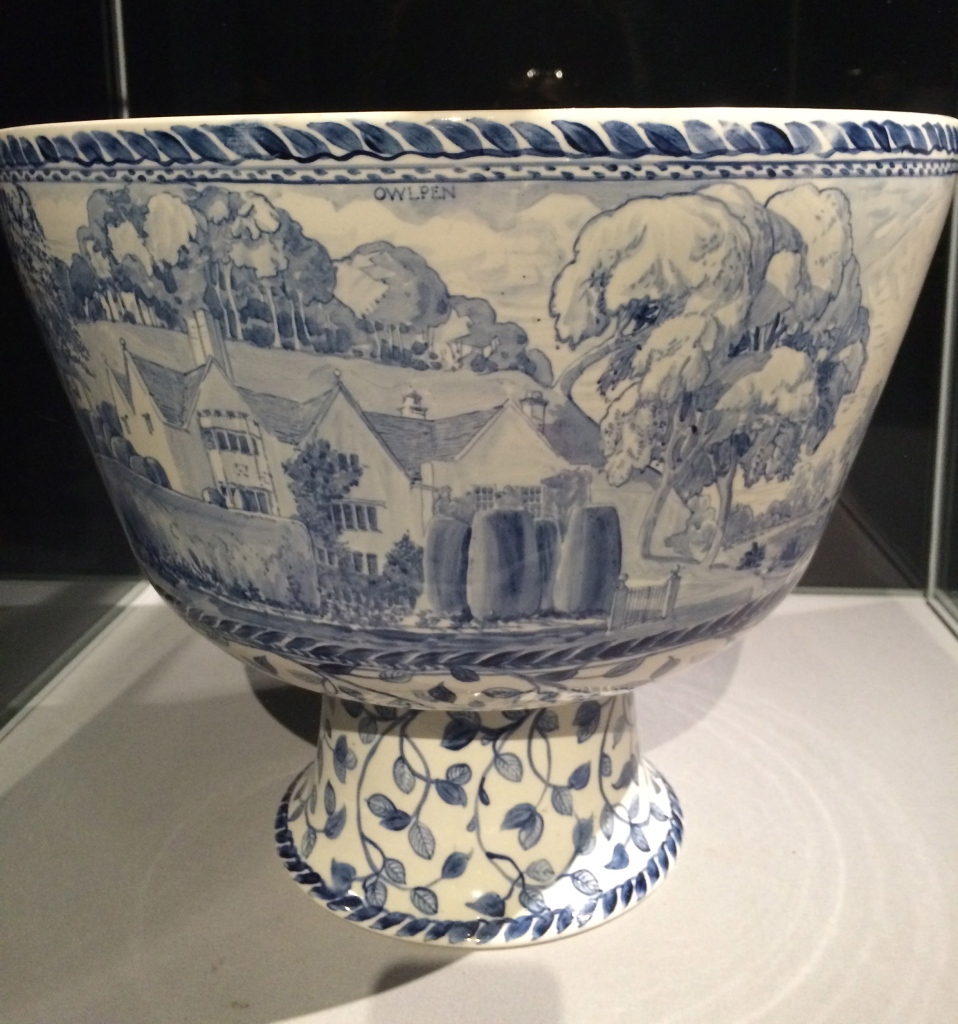 Punch Bowl decorated by Alfred Powell
Punch Bowl decorated by Alfred Powell
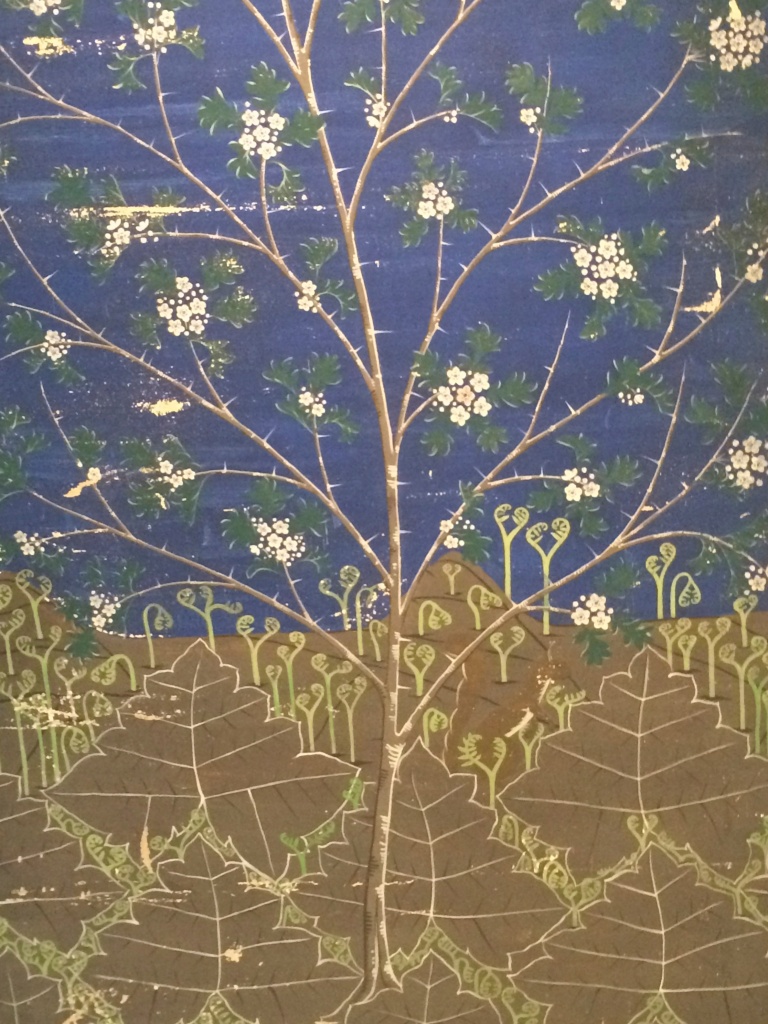 Painted Screen, Louise Powell, 1916
Painted Screen, Louise Powell, 1916
Alfred Powell’s enthusiasm for his life and work is infectious and typical of many of the artists and craftspeople featured in this exhibition. He loved painting but was constantly pulled by the temptation to be outside: “I only wish I could do it running about instead of sitting like a monkey eating nuts”. The couple developed the perfect Arts and Crafts lifestyle, leading a simple but sociable life in the Cotswolds with annual summer camps and musical entertainments which attracted other artists, designers and craftspeople to the area.
I find out about Stoneywell, the idyllic storybook of a summer cottage designed by Ernest Gibson for his brother Sydney. There is a buzz amongst the gallery visitors about Stoneywell – visiting slots for the house now owned by the National Trust are apparently like gold dust and have to be booked months in advance …
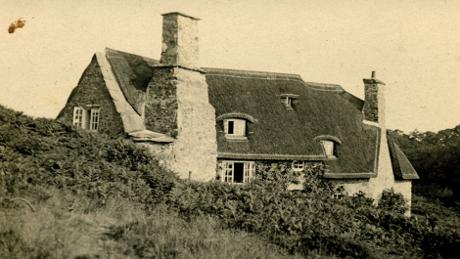 1908 Photograph of Stoneywell, Photograph © Leicestershire City Council
1908 Photograph of Stoneywell, Photograph © Leicestershire City Council
I also learn much more about the architect CFA Voysey whose design aesthetic would be at home in the picture books of my childhood. He designed solid, simple houses with white rendered walls, low grey slate roofs, bright green external paintwork and metalwork for doors and furniture with a distinctive heart-shaped motif and believed in ‘a world where nature carrie(s) a therapeutic message to society’. In an essay of 1909 he wrote ‘Let every bit of ornament speak to us of bright and healthy thought’. One of my favourite exhibits is a charming, brightly coloured design for a nursery chintz, 1929 – featuring a cottage, oak tree, hip-laden roses and animals:
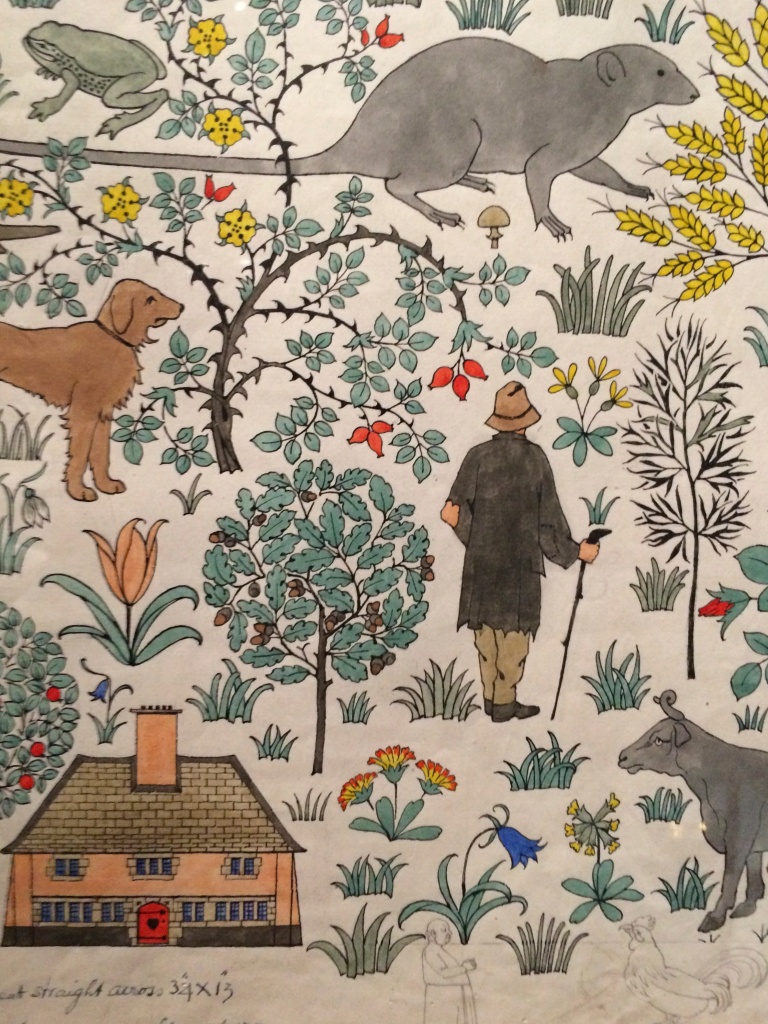
‘The House That Jack Built’ design for nursery chintz, CFA Voysey, 1929
Although the afternoon is rushing past, I suddenly realize that I am only a few miles away from some wonderful Arts and Crafts houses and gardens. It is going to be a whistle stop visit but I decide to make a twenty minute dash over to Hidcote Manor. Hidcote is perhaps the ultimate Arts and Crafts garden – Edith Wharton described it as ‘tormently perfect’ – and I have not seen it for nearly twenty years.
The car park and approach to the house are, of course, overflowing with coaches, buggies and vendors of artisan ice cream – but as soon as I am inside the front courtyard I remember why the garden is so revered. Despite the crowds and the armies of National Trust gardeners, the visitor can still feel the excitement of a garden created 100 years ago by passionate plantsmen and inventive designer, Lawrence Johnstone. It is a garden that has had an enormous influence on the way we make gardens still, and everywhere you look there are some fundamentally good ideas to take on board.
One of Johnstone’s first steps was to make sure that the buildings which make up the Courtyard were welcoming and well clothed with handsome planting. The now classic combinations of Magnolia delavayi, spreading pink and pale pink hydrangeas, architectural ferns, fuchsias and my favourite late flowering Begonia grandis subsp. evansiana with its heart-shaped leaves and pale pink flowers to come, look strong and handsome against the golden Cotswold stone.
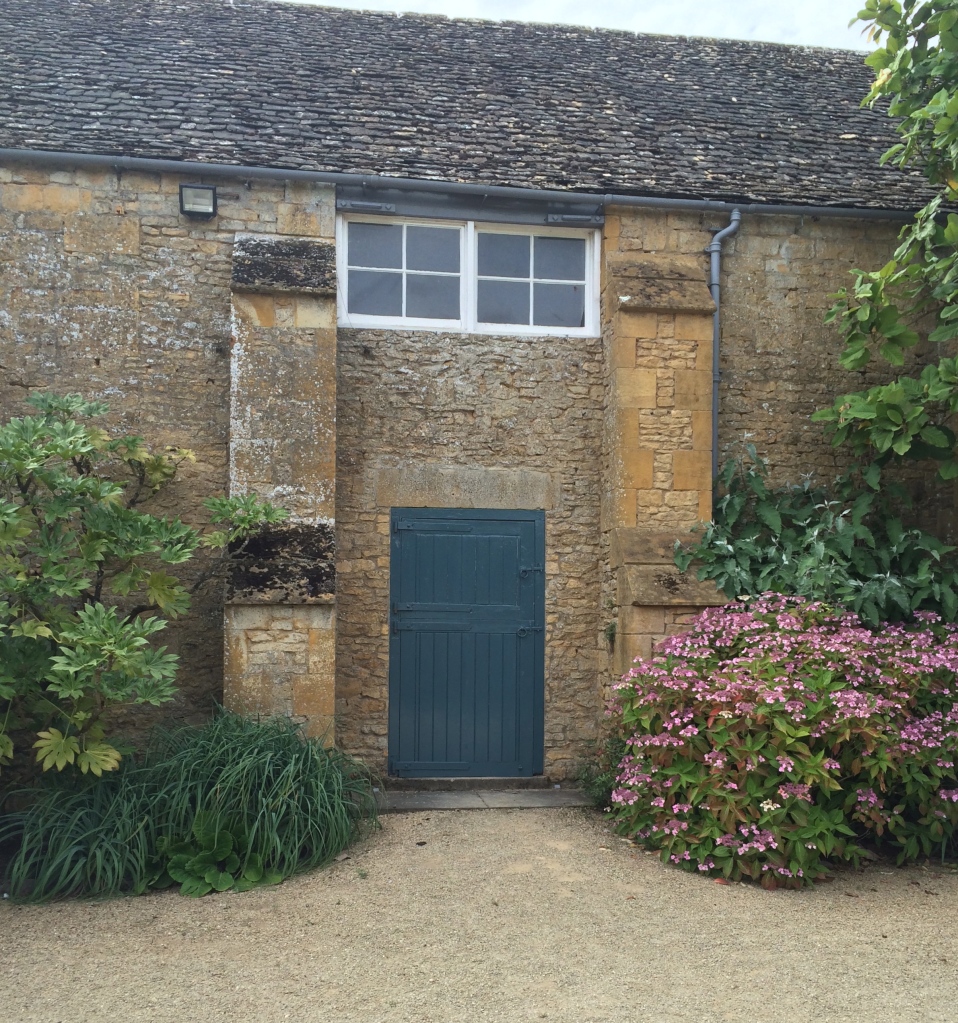
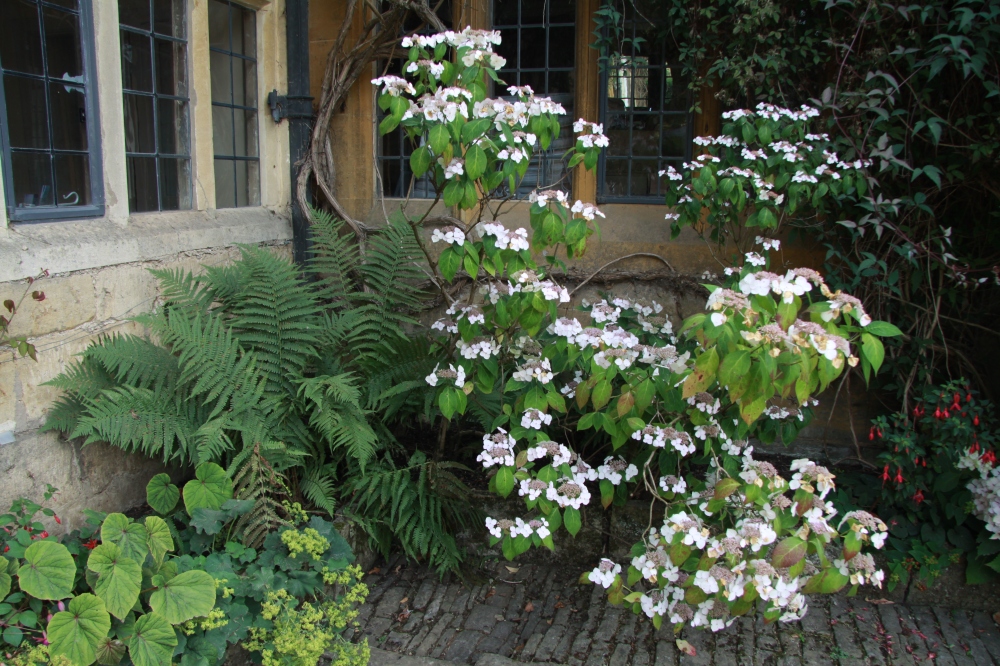
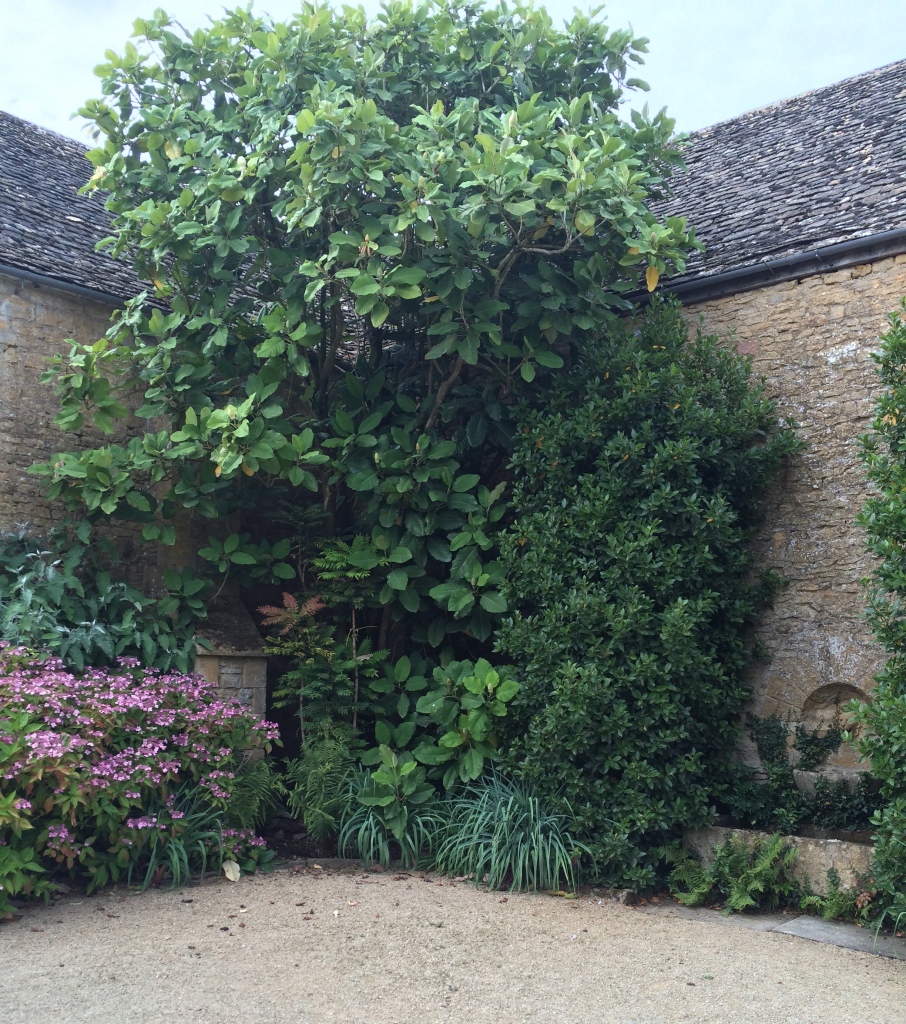
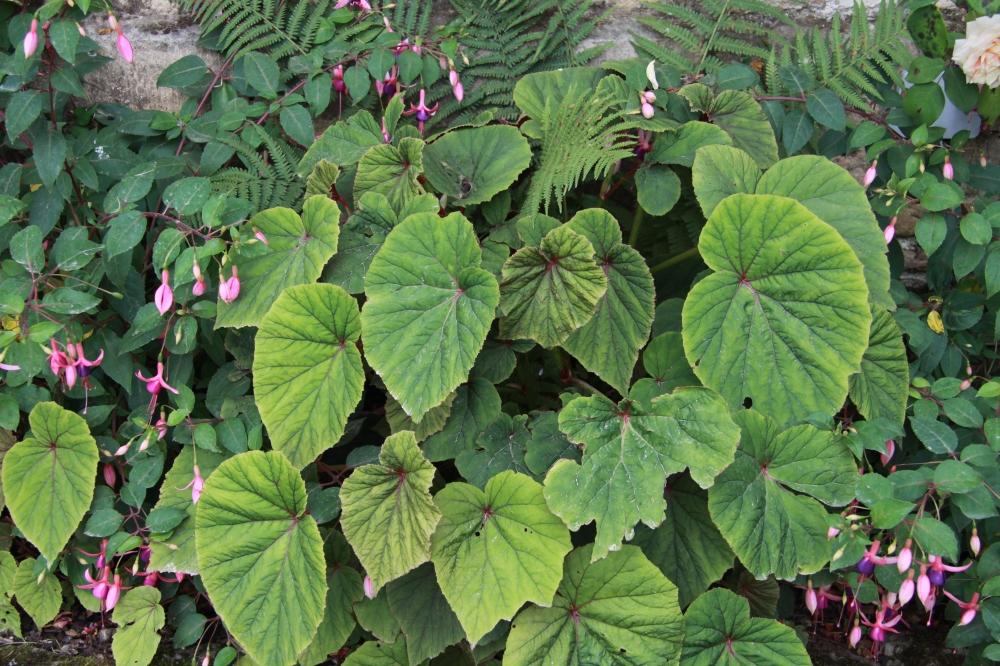 The entrance Courtyard, Hidcote Manor, with hydrangeas, ferns, Magnolia Delavayi and fuchsias with Begonia grandis subsp. Evansiana
The entrance Courtyard, Hidcote Manor, with hydrangeas, ferns, Magnolia Delavayi and fuchsias with Begonia grandis subsp. Evansiana
The original courtyard was apparently of a rather severe stone but Johnstone softened the entrance by using mostly gravel – but adding this lovely narrow brick detailing to mark the edges of the borders:
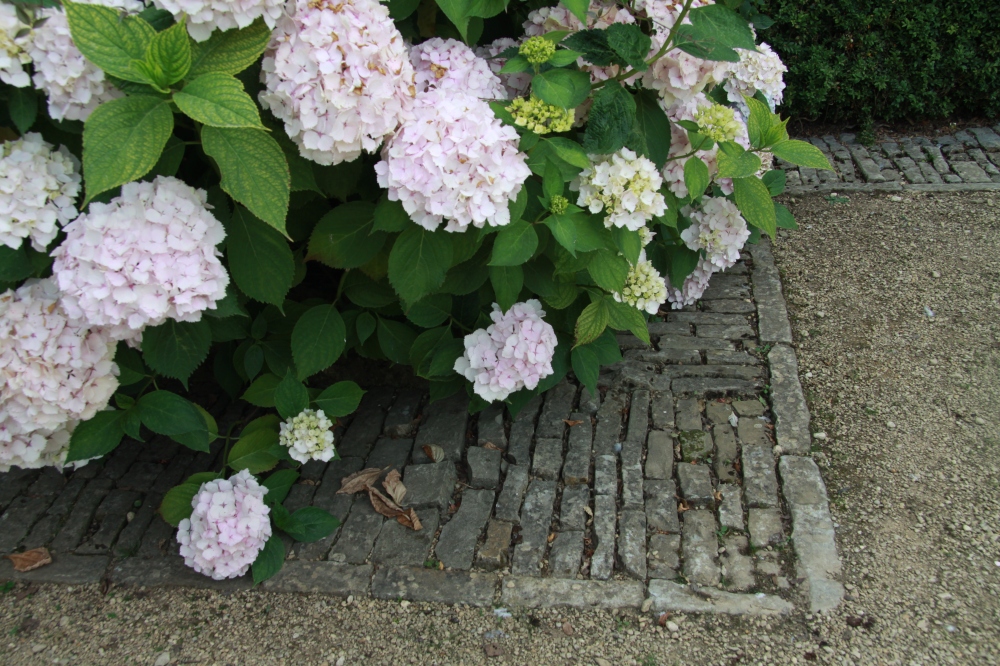
Brick detailing marking the edges of the entrance borders
Elsewhere in the garden there are some other fine examples of hard landscaping – a path made with broad circular flagstones, a very fine set of curved steps and a lovely winding path made of rough square cobbles.
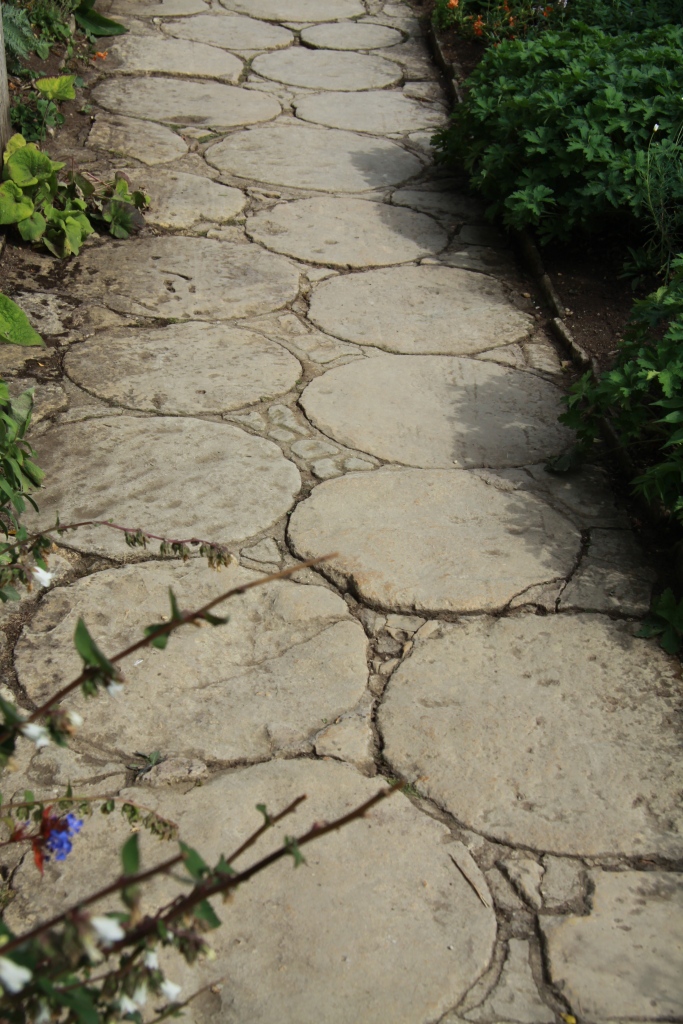 Path with circular flagstones
Path with circular flagstones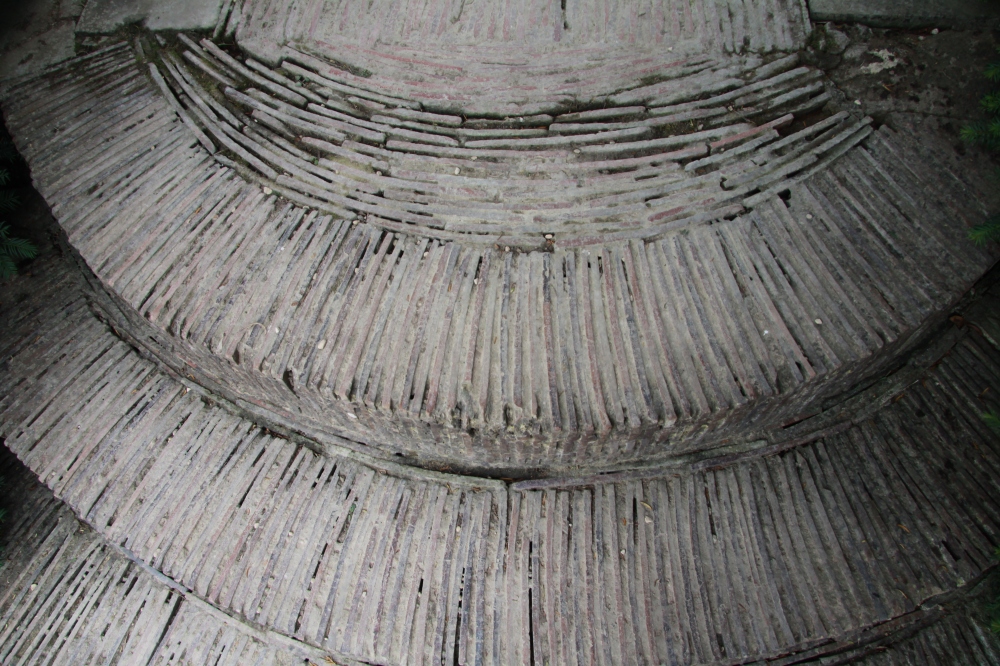 FIne curved Arts and Crafts steps
FIne curved Arts and Crafts steps
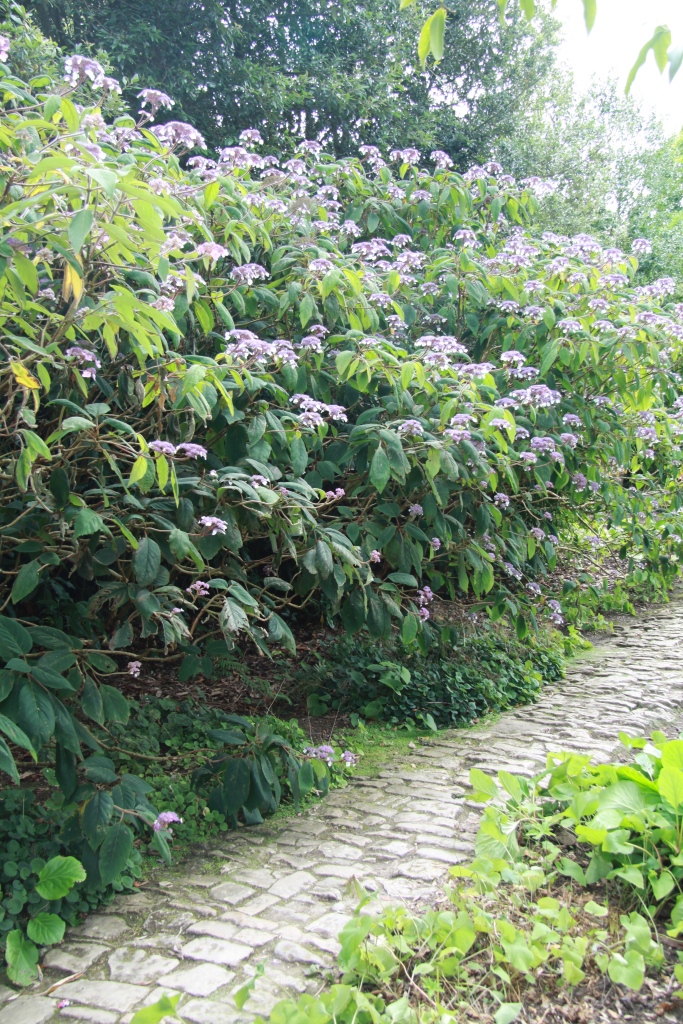 WInding path made of rough, square cobbles
WInding path made of rough, square cobbles
There is huge pleasure taken throughout the garden in the colour green. In the Bathing Pool Garden, the brilliant pea green of the pool water is set against the velvety green of the immaculately clipped yew hedge and archway:
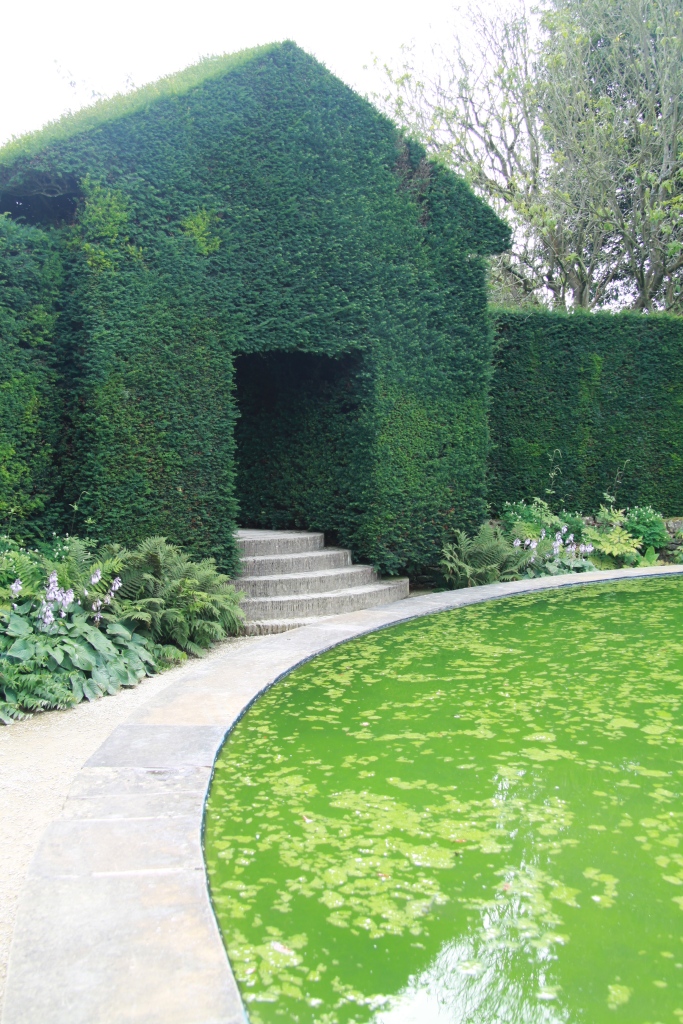 Clipped yew and brilliant green pool in The Bathing Pool Garden
Clipped yew and brilliant green pool in The Bathing Pool Garden
At the base of the yew hedge there are soft contrasting greens of ferns, hostas and aruncus:
There is a completely calm ‘Green Circle’, empty but for more clipped yew, overspilling Vitis coignetiae – which will turn a vivid claret – and a blue green bench:
A beautifully grown wall of the unsurpassable evergreen, shade-loving climber Pileostegia viburnoides:
A deep green ‘Pillar Garden’ – pillar after pillar of yew glimpsed here through the brown-green fringe of a hornbeam gateway:
View through to The Pillar Garden
And my favourite moment in the garden, a pair of electric green tree peonies against another yew arch:
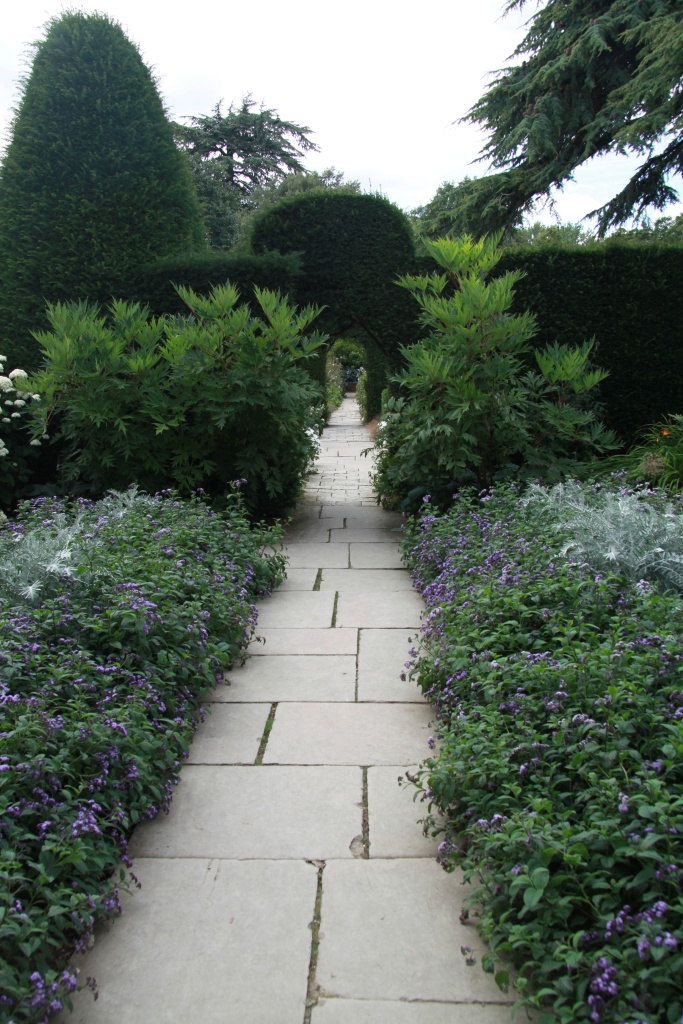
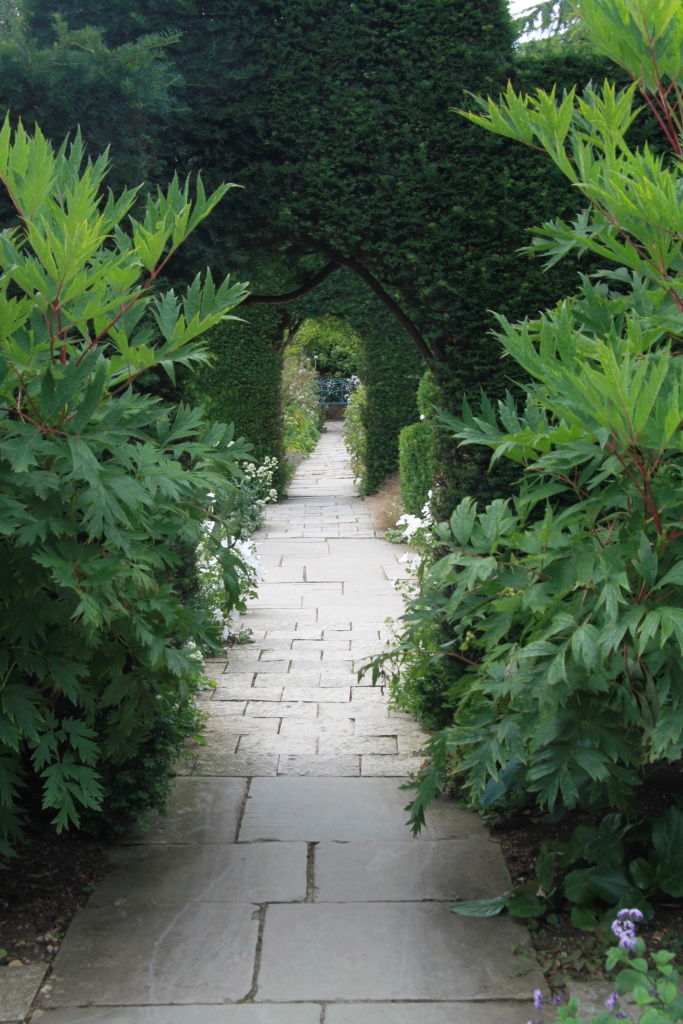
Electric green tree peonies against a yew arch – the parallel beds in front are filled with the powerfully vanilla scented Heliotropium ‘Lord Roberts’ .
Elsewhere the garden is filled to the brim with colour. The Old Garden – banked up high with hydrangeas and phlox reminds me of the exuberant relaxed sense of plenty at Gravetye Manor (see also my April 2014 post, ‘How to Get and A* for Your Garden’).
 Vibrant colour in The Old Garden
Vibrant colour in The Old Garden
Everywhere you look there is an energy and an invitation to explore further. There are buddleja flowers sprouting over rooftops, winding paths leading you on, delectable carmine and white lilies against lime green ferns, and entire borders of orange lilies, lipsitck pink phlox and salmony pink diascia.
The renowned Red Border – although rather formally fenced off when I visit – looks subtle and inviting:
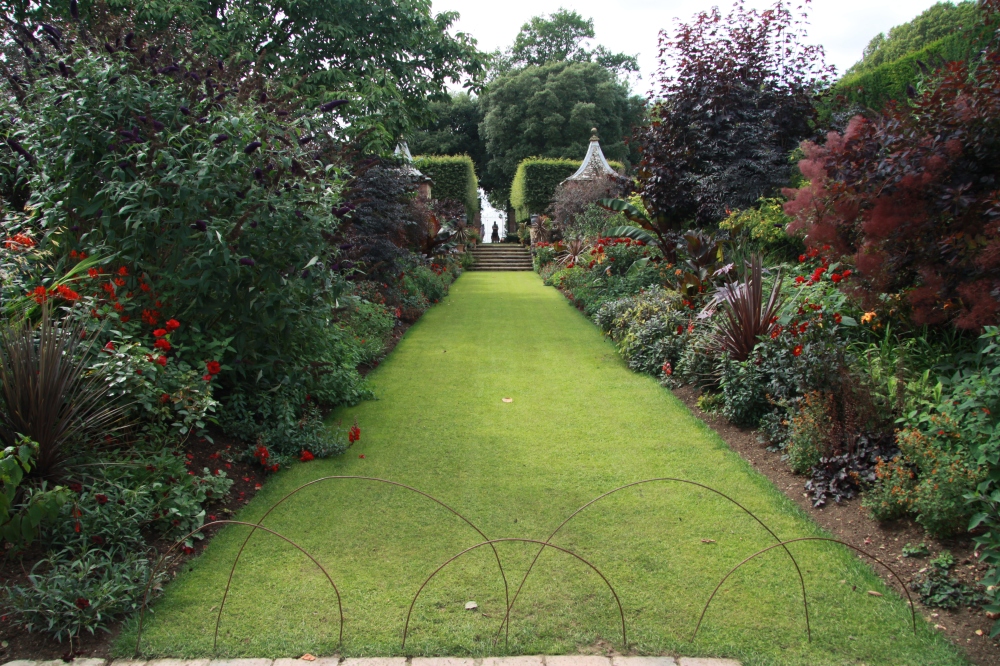
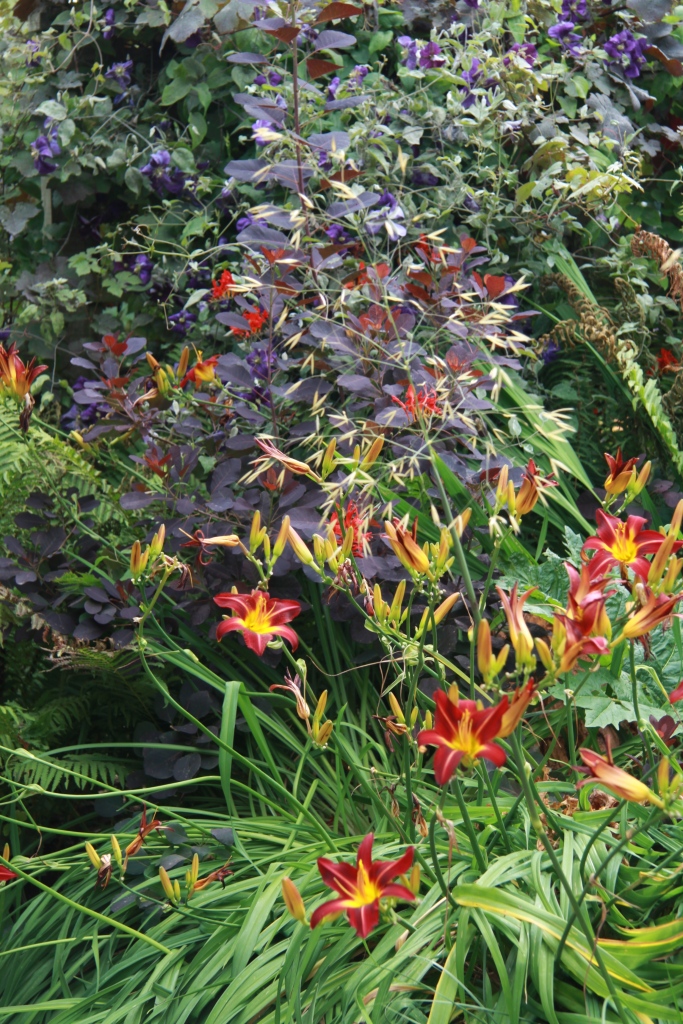
The Red Border: a detail of brick red day lilies, a dark red Cotinus and Stipa gigantia
The famous Gazebos, built by Johnstone in 1917, are a brilliant structural device, and the quality of materials, from the soft roof tiles to the antique Delft tiles in the interior, are timelessly covetable:
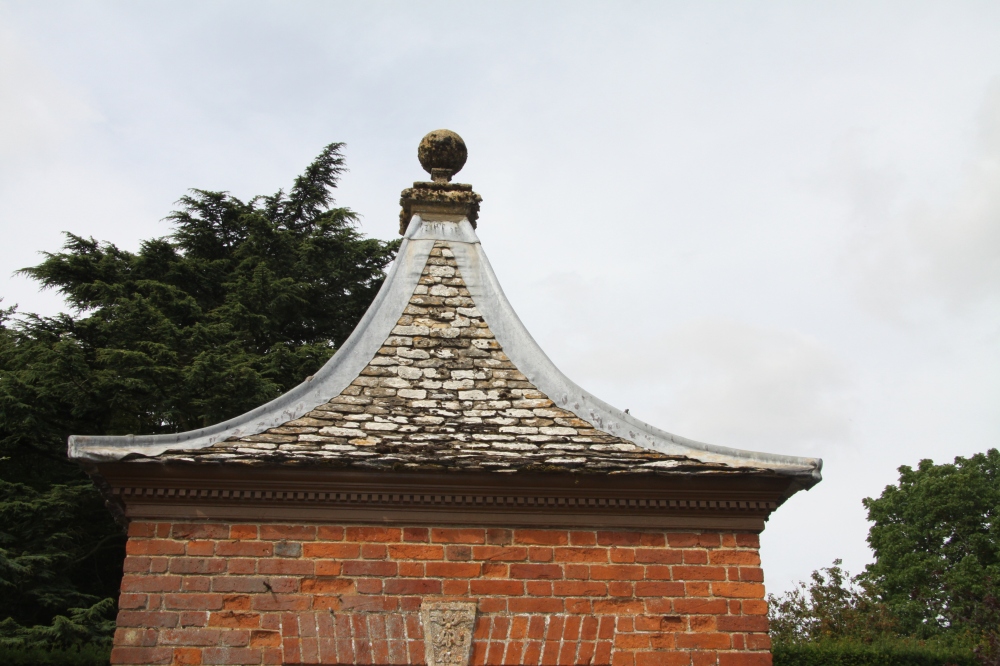
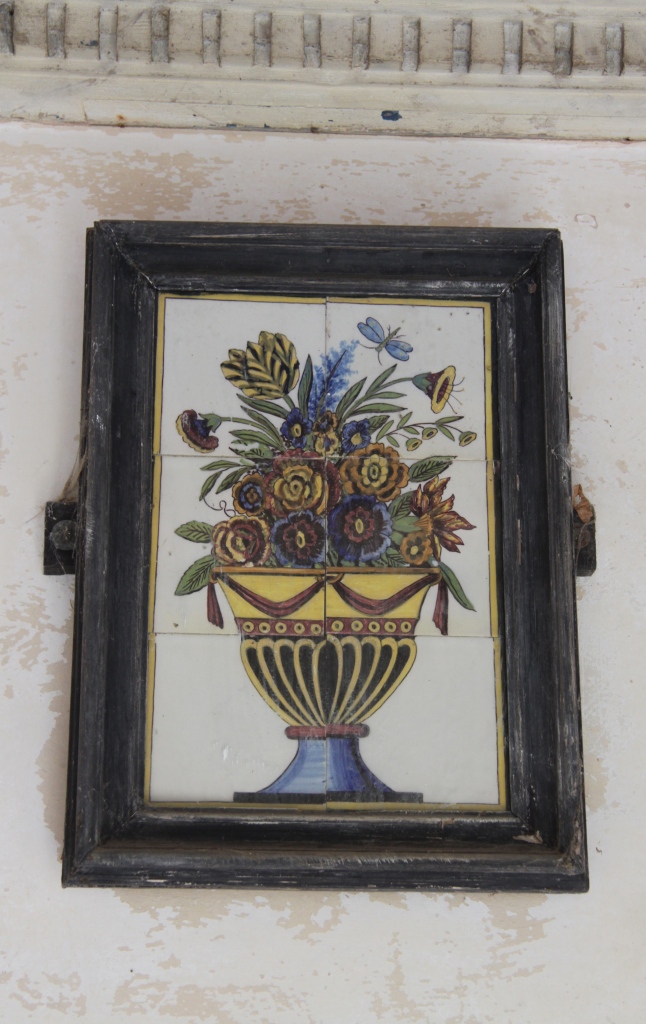
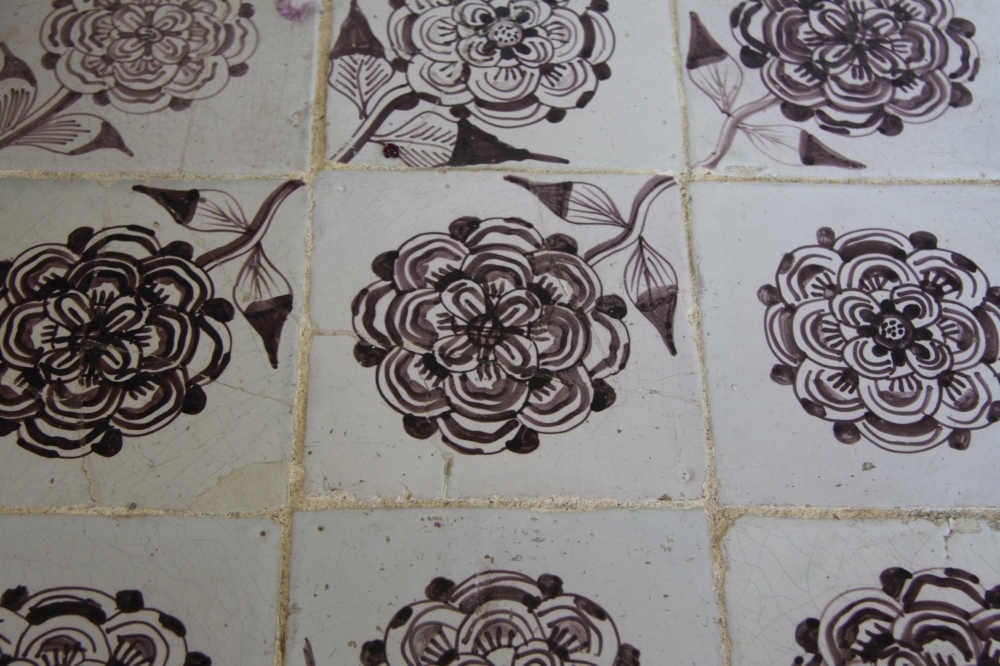 Roof and interior details of one of the Gazebos
Roof and interior details of one of the Gazebos
As I leave – neglecting whole sections of the garden, including The Wilderness, the Beech Allée, Lime Arbour and the unique Alpine Terrace – a stand of brilliant blue Aganthus against a yellow stone wall makes me smile with its sheer midsummer enthusiasm.
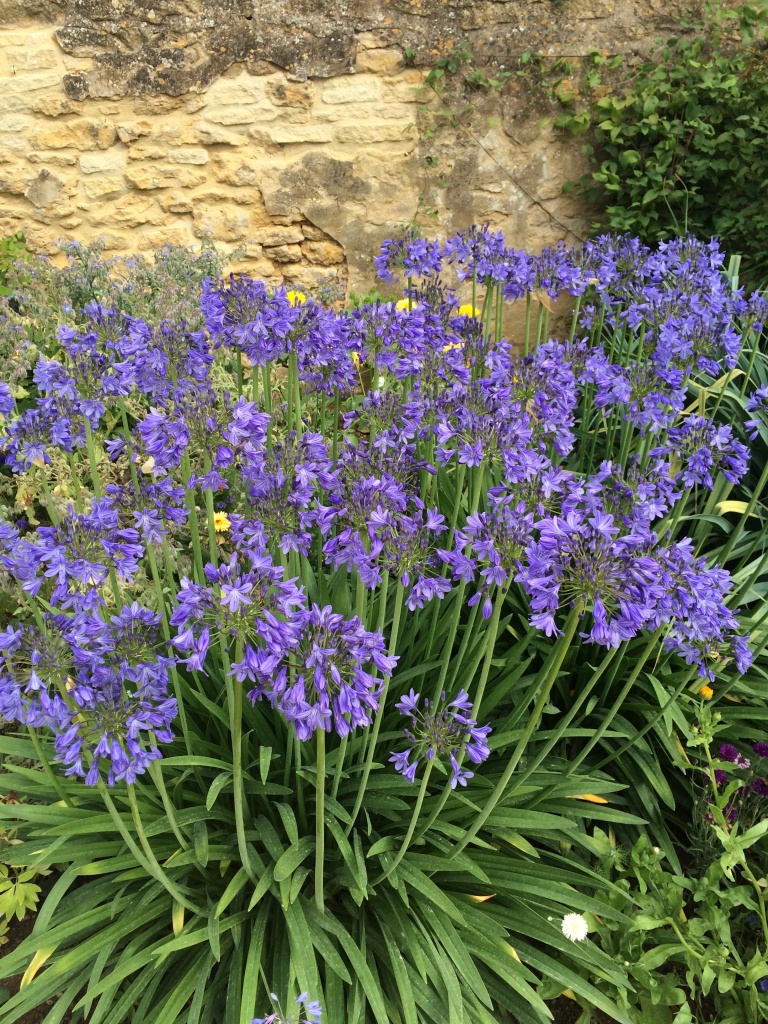 Agapanthus against yellow wall
Agapanthus against yellow wall
Just beyond the garden gates I walk under the heavily laden branches of a magnificent yellow-berried Viburnum opulus ‘Xanthocarpum’. A cheery foreshadowing of the Autumn that is just around the corner and one last addition to my Hidcote inspired wish list.
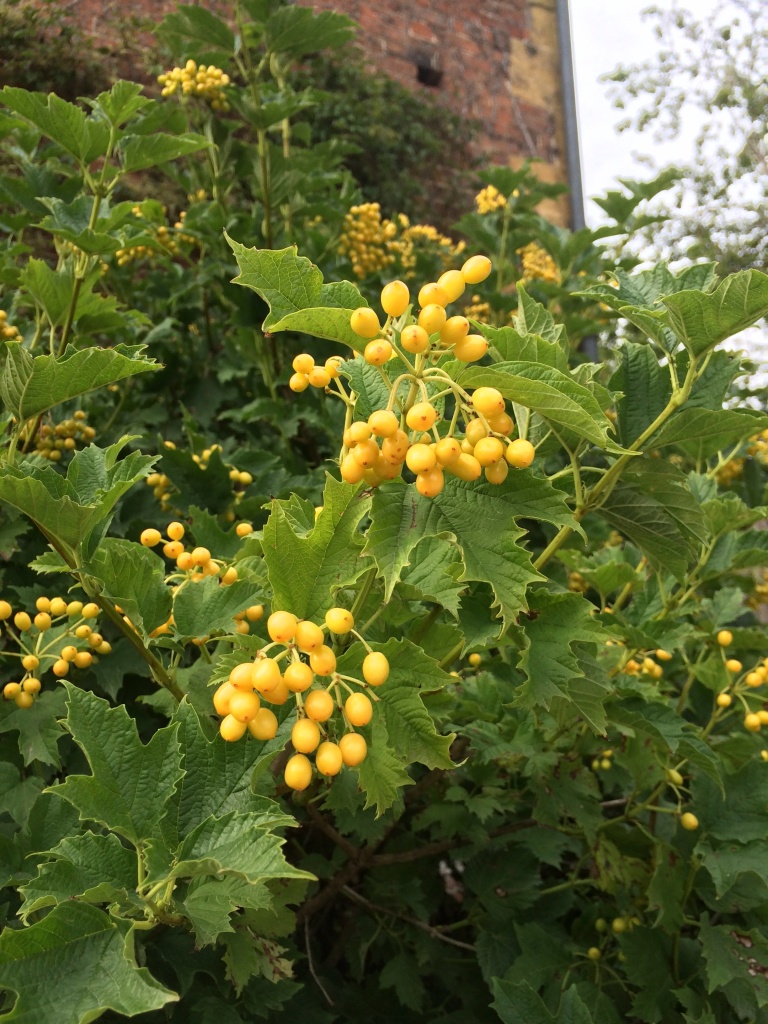 Viburnum opulus ‘Xanthocarpum’
Viburnum opulus ‘Xanthocarpum’

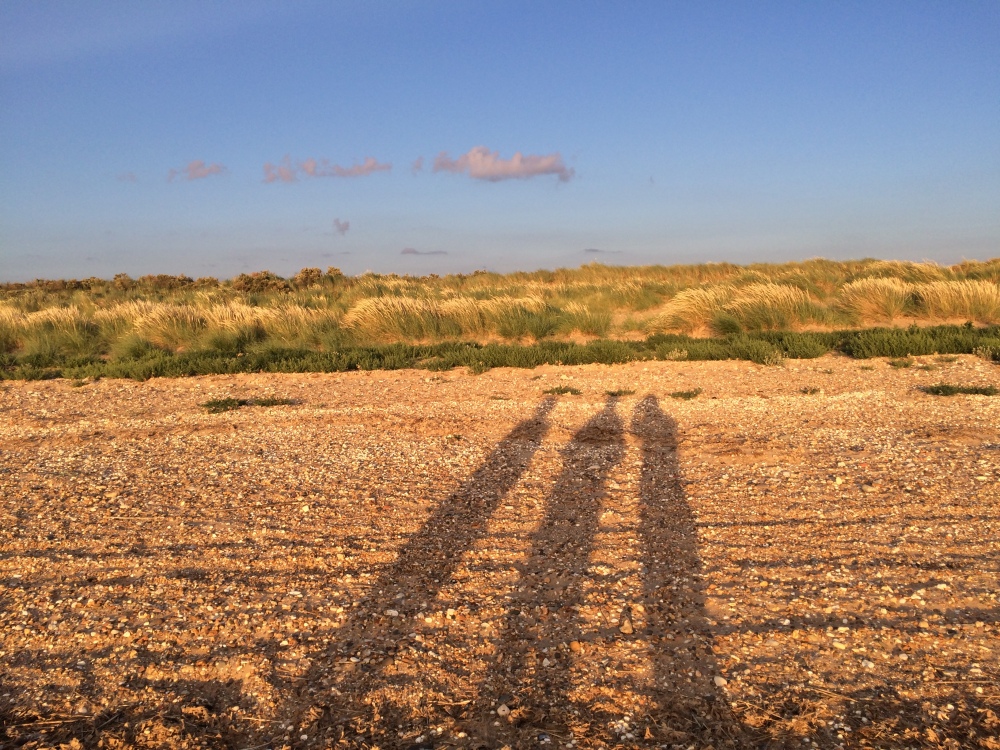
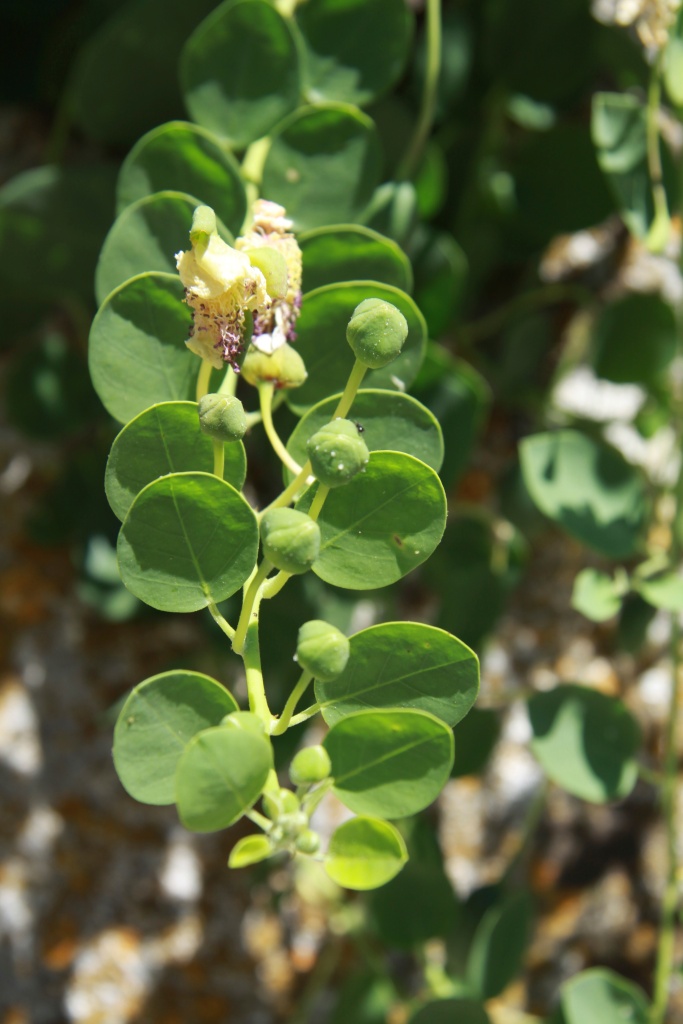
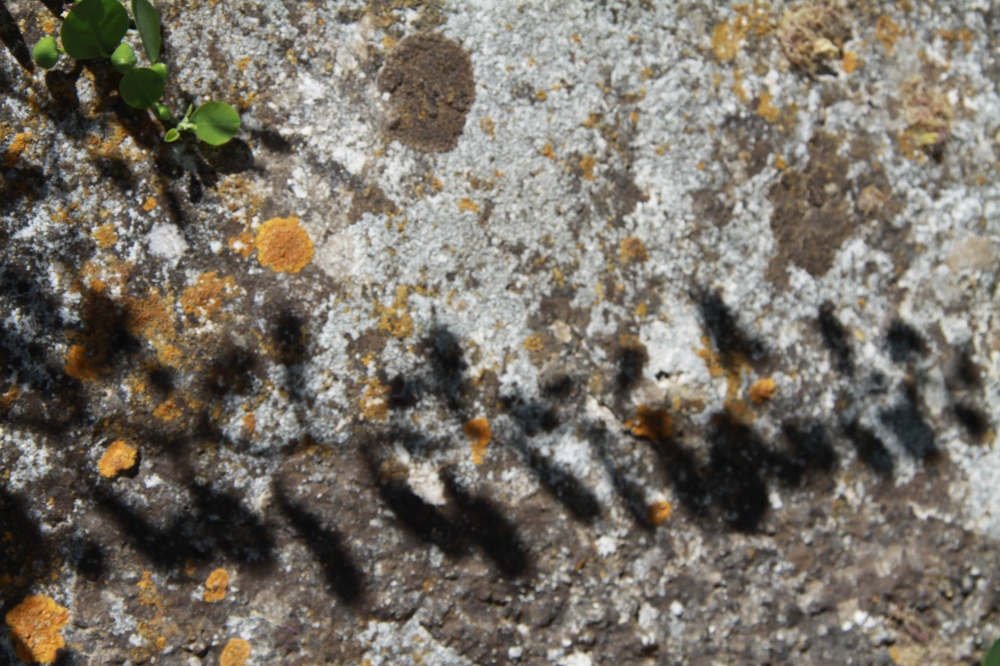
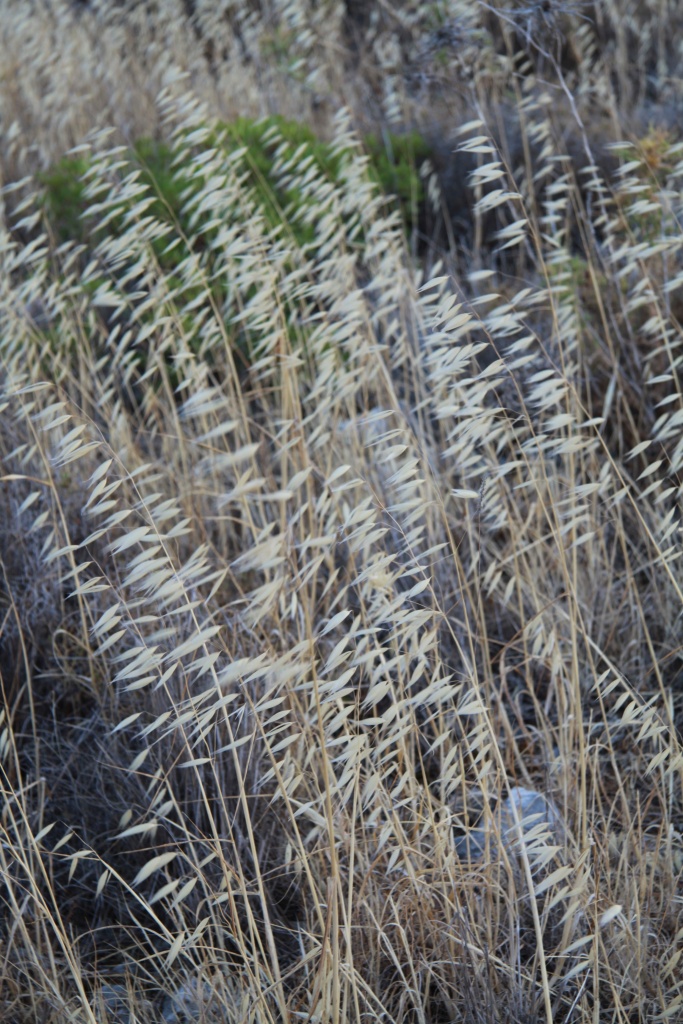
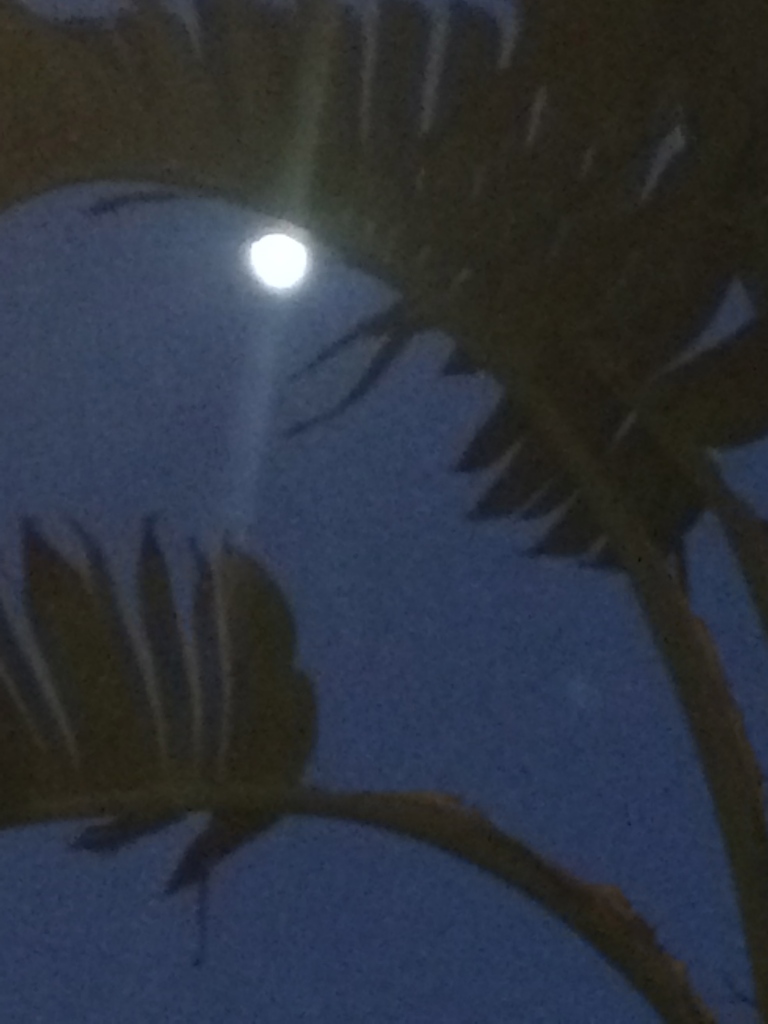
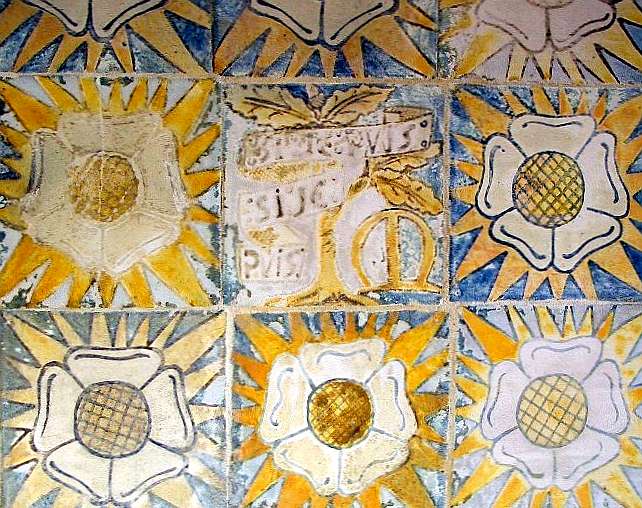
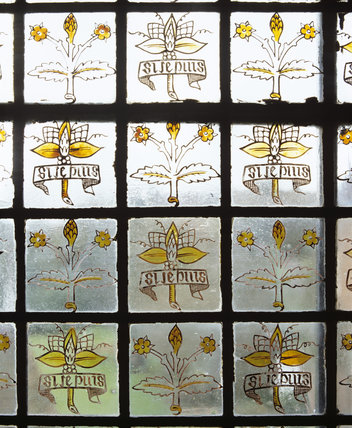
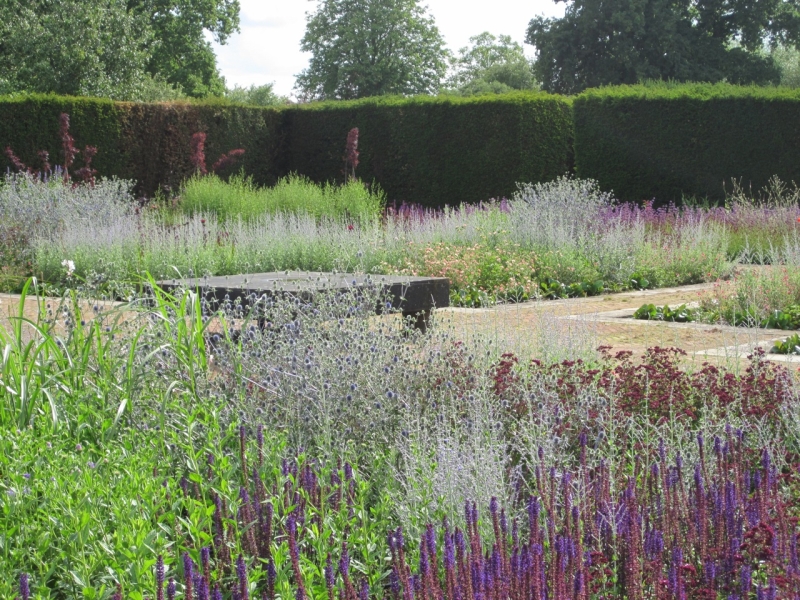
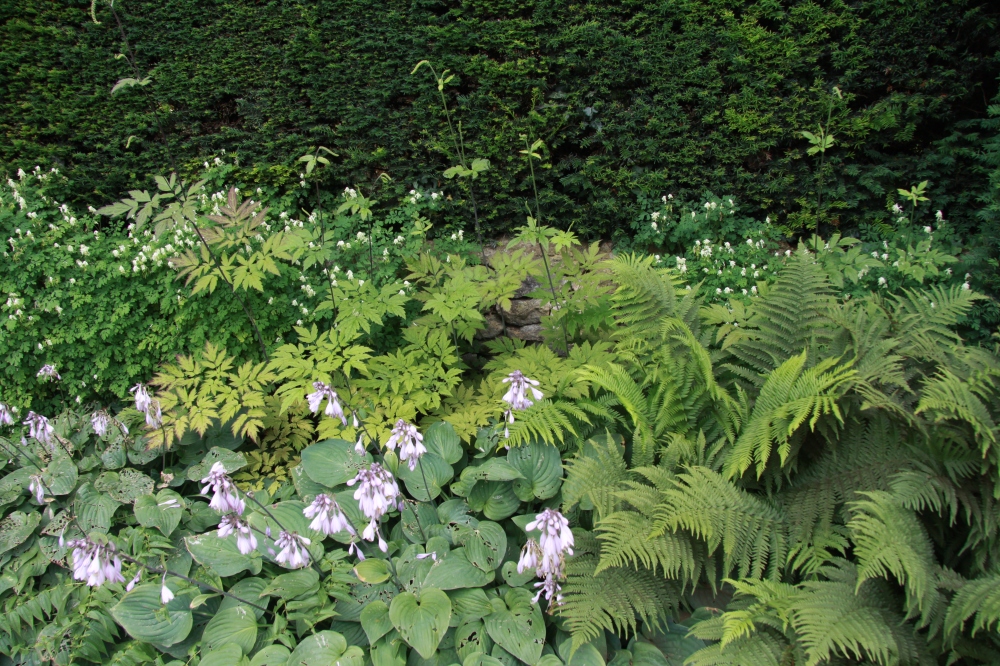
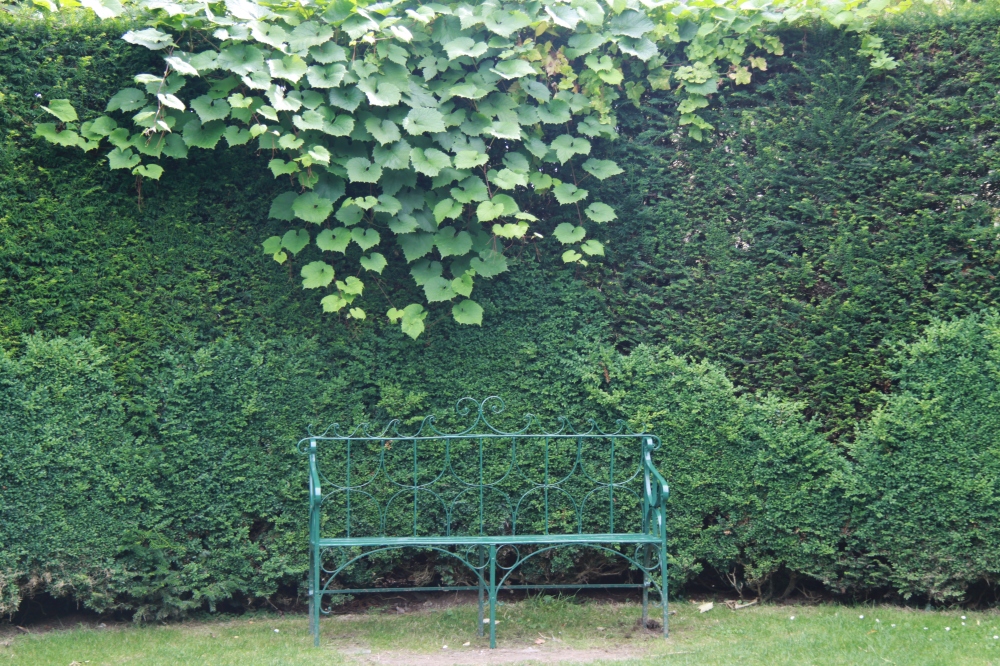
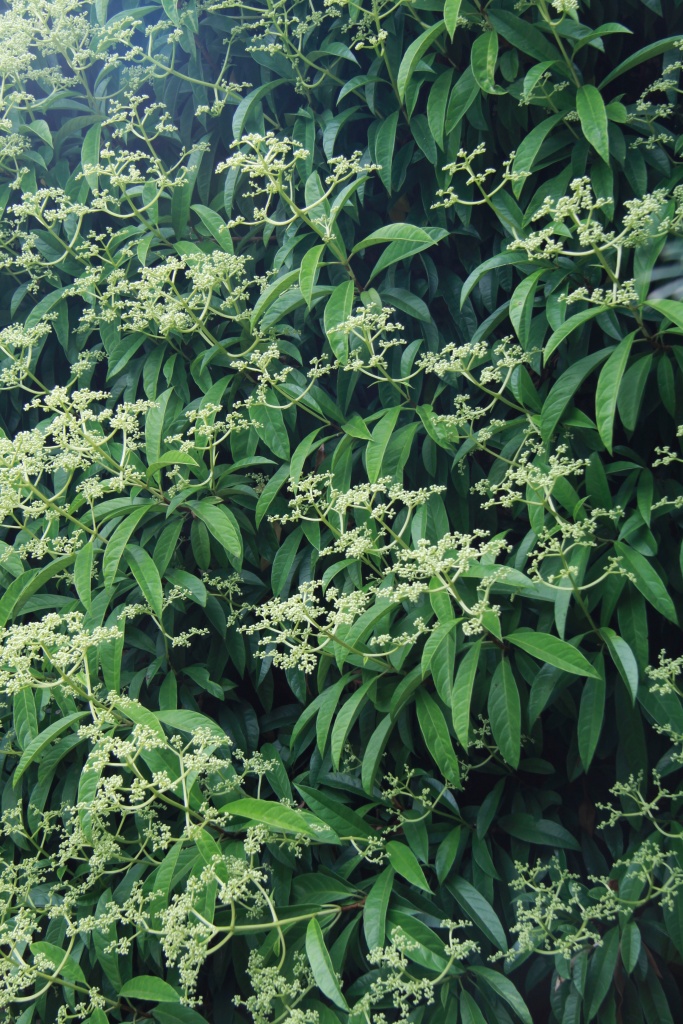
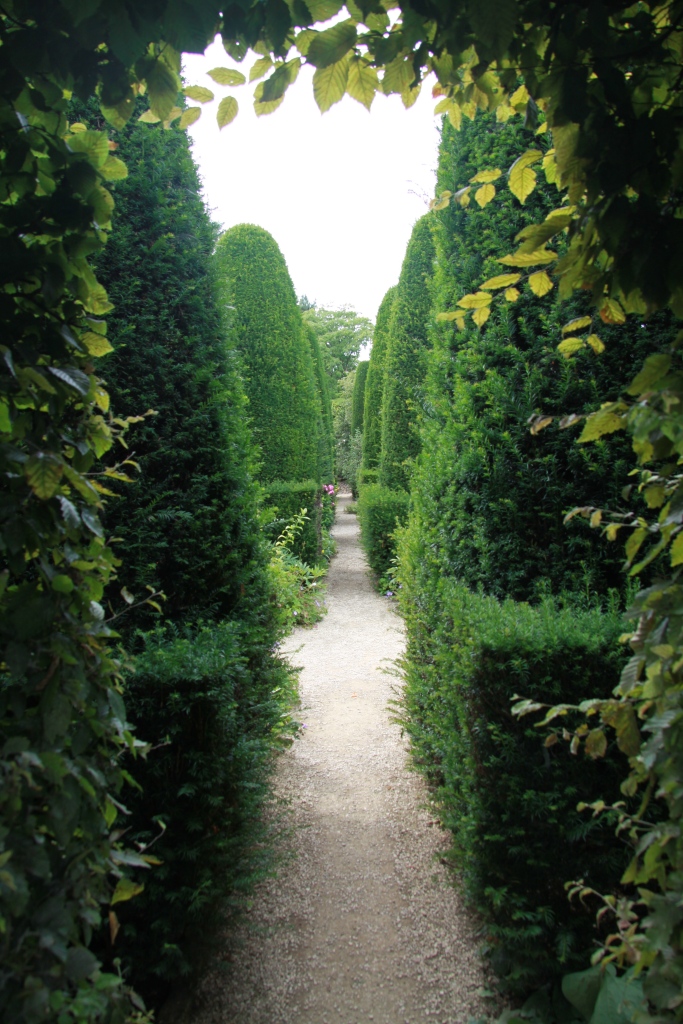
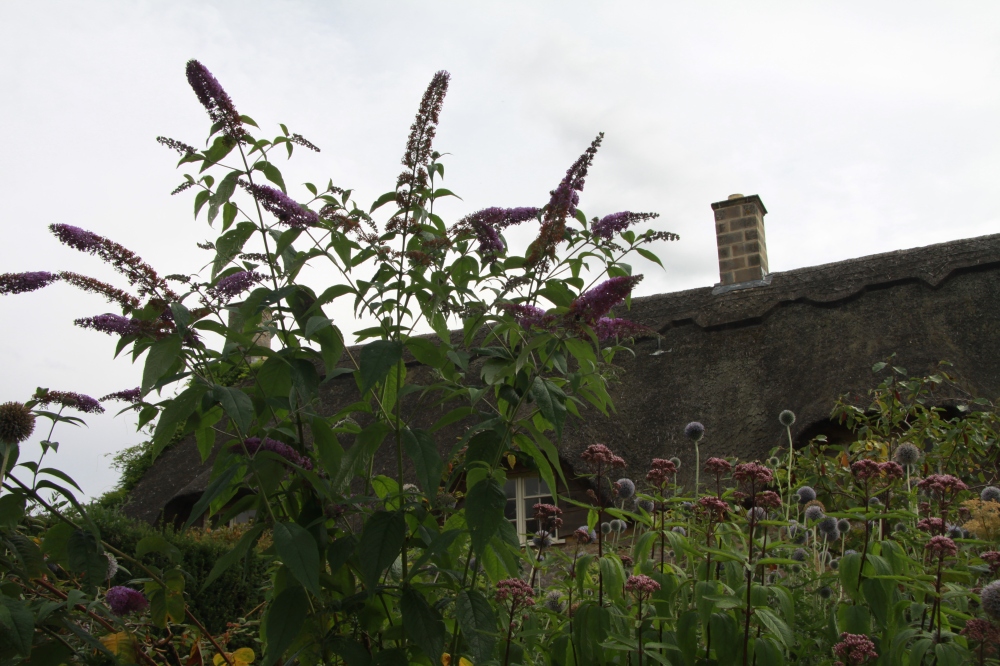
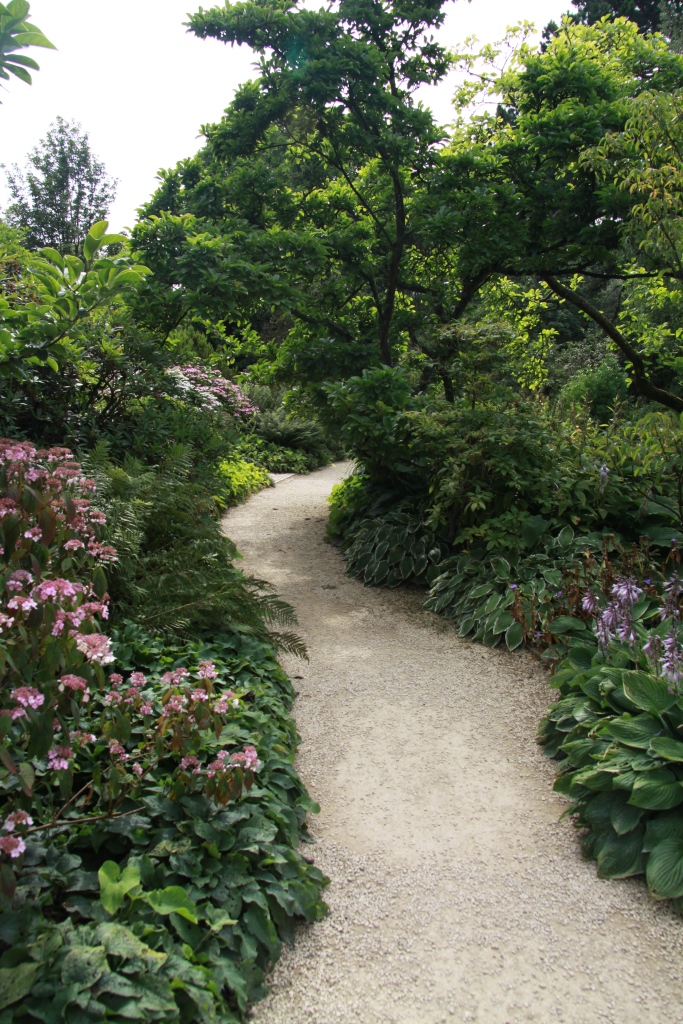
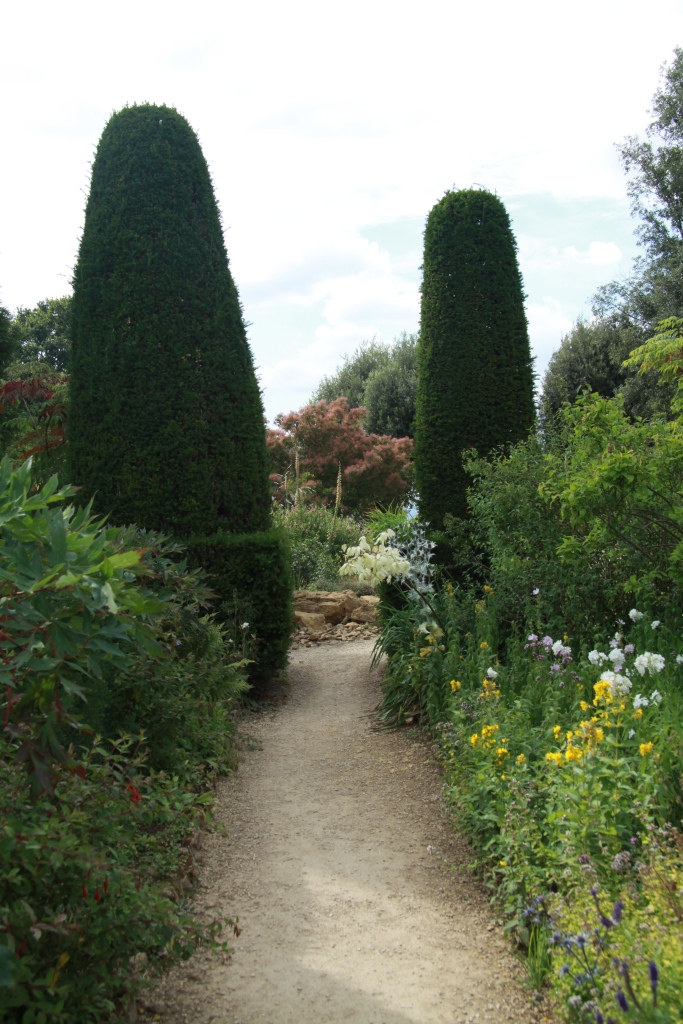
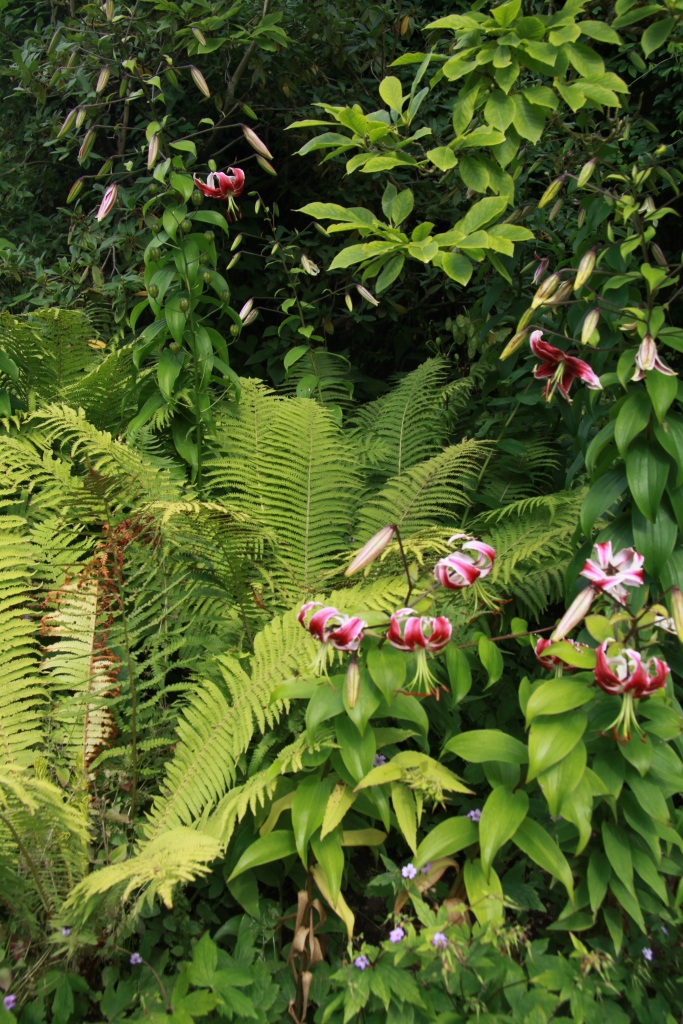
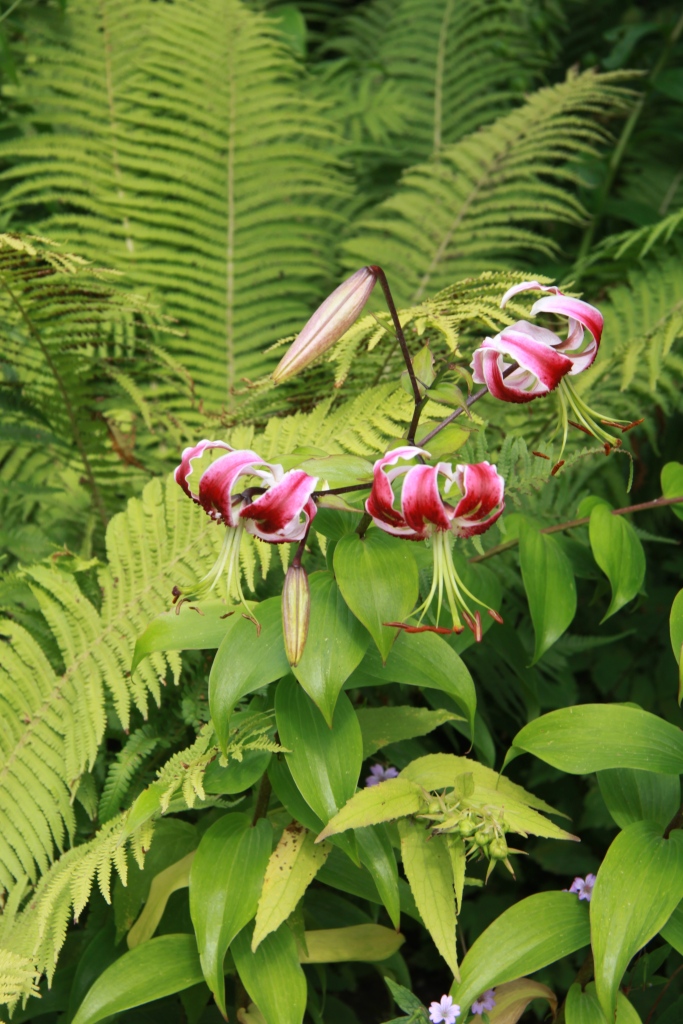
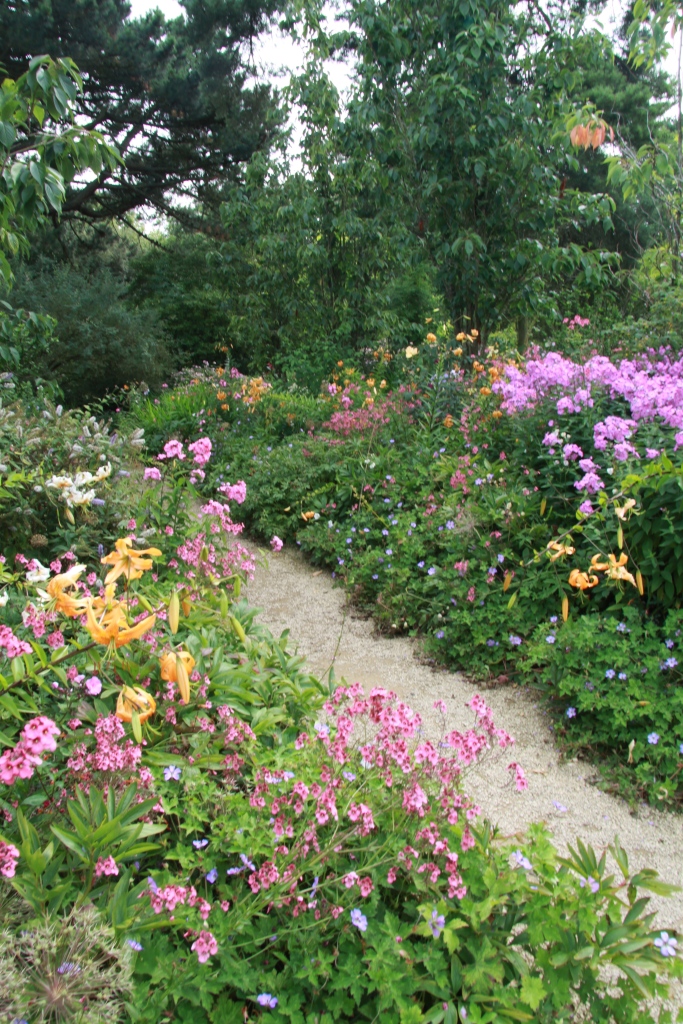
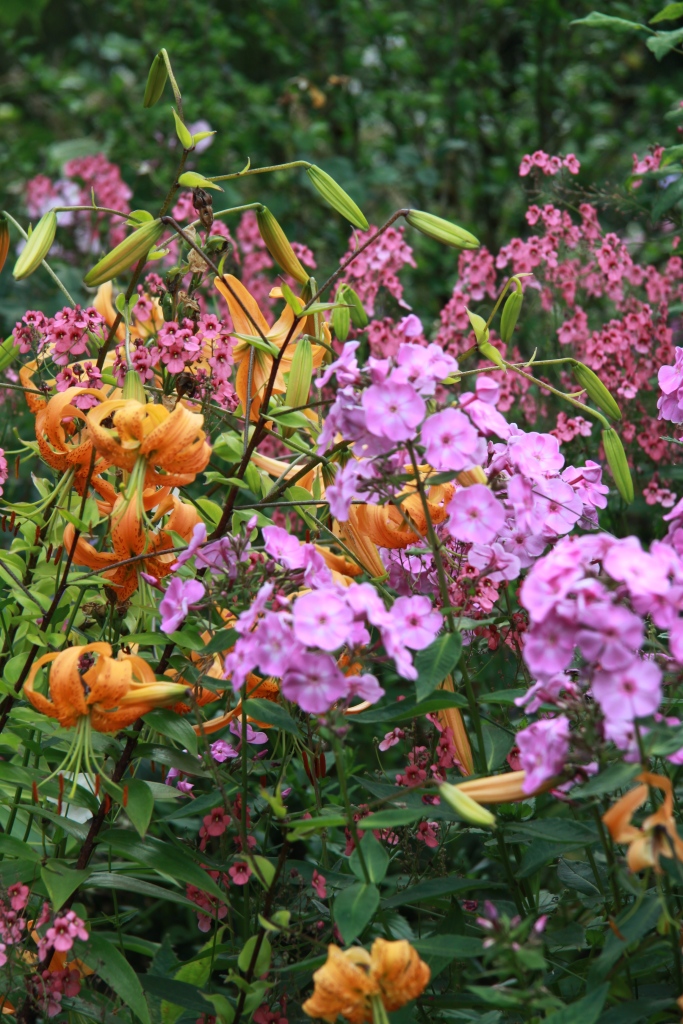
The Wiliam Morris trellis didn’t work for me either, Non. Even looking at it from above – from the gallery terrace – you can’t make out what it’s supposed to represent. The flowers weren’t quite out on the day that I visited so I’m surprised they’re such lollipop colours. I don’t much care for Folly Farm, either; only judging by the photos in the exhibition, as I haven’t seen the real thing – but the planting seemed at odds with the house. Give me G Jekyll any day! They were saying that other designs could be mowed into the meadow in future years, so maybe the next attempt will be more successful.
I enjoyed the exhibition – except for the modern ceramics. Truly ghastly! Useful/beautiful now useless/ugly!
I also visited Hidcote a few weeks ago – but it was chucking it down with rain. Hardly any visitors but I was soaked to the skin. Far too wet to appreciate details like that lovely paving so I’ve enjoyed your pictures.
Hi Mary – quite relieved was not the only one to be underwhelmed by the William Morris Meadow at Compton Verney. Interesting that there may be plans afoot for more complex additions/changes in future years. I do hope so. Believe me that the colours were v. sugary!
Glad you enjoyed the exhibition. It is small but some rare things which are very good to see close up and not in a book or on a screen. I agree about the modern ceramics but I loved the work the children had done overlaying William Morris wallpaper.
Sorry you saw Hidcote in the rain – I enjoyed my visit despite anxiety that it would be swamped by people just wanting a day out. Witholding judgement on new planting at Folly Farm. I suspect it is very lovely but can be very old fashioned too. An interesting test case!
Thanks for your comment, all the best, Non